The Village People, Michael Jackson, Jane Fonda, Valerie Perrine, and Bruce Jenner at Studio 54
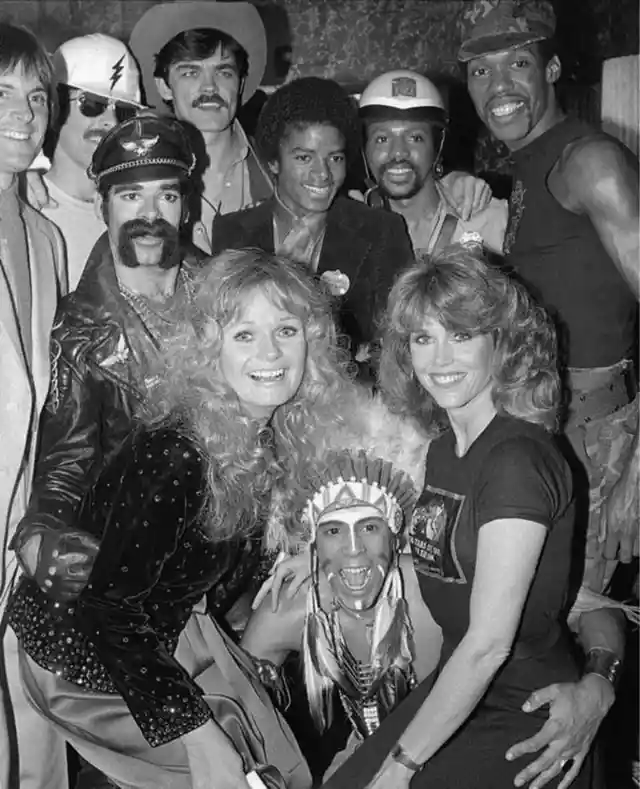
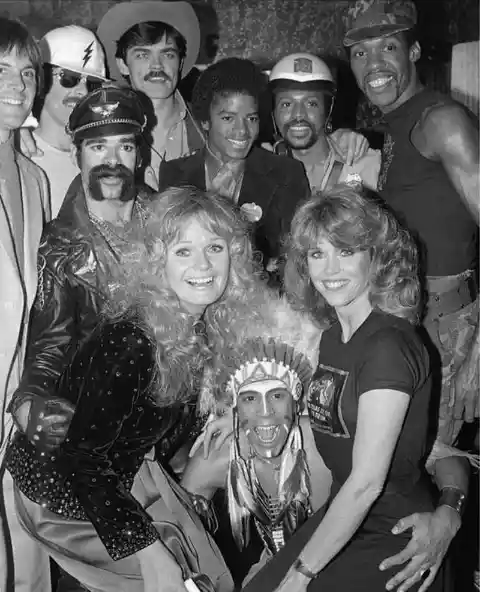
Imagine the secrets veiled behind the smiles in this photo. Most of The Village People were celebrating their identities loudly and proudly, though Victor Willis would point out, "I'm straight." This scene was just a glimpse of the deeper narratives each person held.
Michael Jackson was making a bold move, stepping out from the Jackson 5's shadow to shine on his own. Yet, as he embarked on this solo journey, the scars of his father's abuse weighed heavily on him, setting the stage for both his incredible rise and the ensuing hardships that would mark his path.
Jane Fonda was there, too, piecing her professional life back together, step by step, after the "Hanoi Jane" controversy. Her determination was as clear as the bright lights of the club.
In that same space, Bruce Jenner, fresh from his Olympic glory, basked in the aura of an American hero. But beneath the surface, he was silently grappling with a private struggle, a battle with gender dysphoria that had no name at the time. It would be another quarter of a century before Jenner would publicly embrace her true self as a transgender woman.
These were the untold stories, the hidden chapters of lives unfolding away from the camera's flash. Each of us, captured at that moment, held a story much more complex than what the eye could see.
Lynda Carter as our favorite version of Wonder Woman
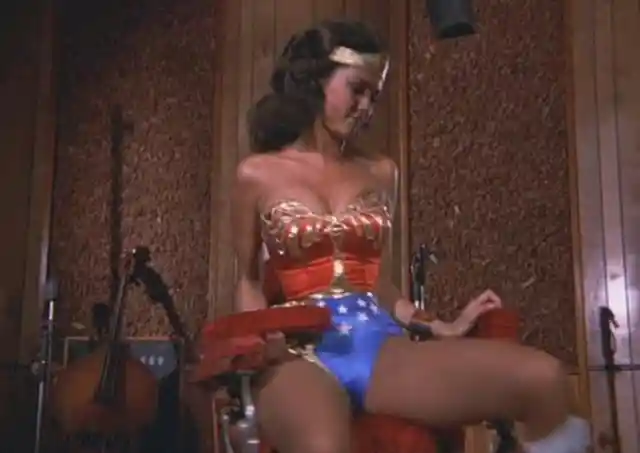

Lynda Carter, who we all admired as Wonder Woman, embodied strength and courage not just on screen but off it as well. In 2018, she shared a painful piece of her past, revealing that during her time on the show, she was sexually assaulted by a producer whose name she carried like a hidden scar. This violation left her feeling powerless, a stark contrast to the invincible superhero she portrayed.
When the time came to speak of her ordeal, Carter chose not to disclose the attacker's identity. She explained that the man was "already being done in," suggesting a twist of fate already at play, and saw no benefit in "piling on again." Her solidarity was clear, however, as she affirmed her belief in "every woman in the Bill Cosby case," aligning herself with fellow survivors.
The revelation was a chilling reminder that even those who seem invincible on screen can be vulnerable in the shadows of their real lives. Carter's resilience, and her ability to stand tall after such an experience, only reaffirmed that she truly is Wonder Woman in more ways than one.
Hitler was seriously embarrassed by this ridiculous photo
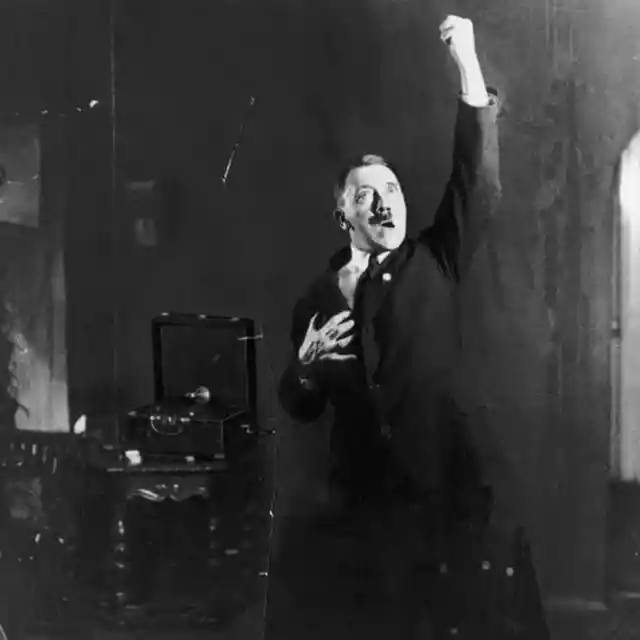
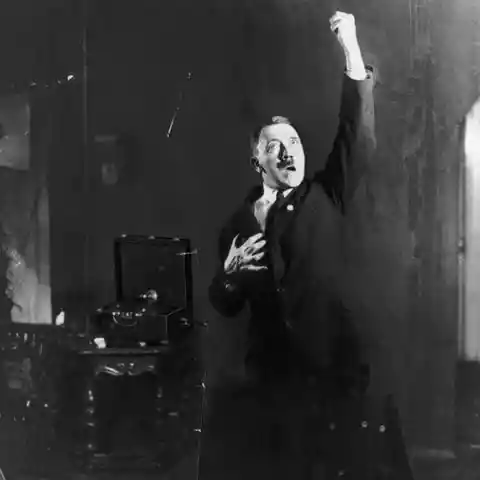
Hitler, with his iron grip over the masses, knew the power of a speech well delivered. To hone this skill, he'd rehearse relentlessly, perfecting each gesture, each expression. He sought to embody the image of the absolute ruler, so much so that he had his photographer, Heinrich Hoffmann, capture these rehearsals to ensure his presence was as authoritarian as it felt.
But there was a catch – he wanted the world to think this was all natural talent. The photos were a secret, meant to be kept from the public eye at all costs.
And yet, despite the meticulous practice, the captured images of his rehearsals were far from imposing. Each photo, even the best among them, betrayed the contrived nature of his performances, revealing a side of silliness rather than the severity he aimed for.
From the movie "Johnny Cool," Elizabeth Montgomery, 1963
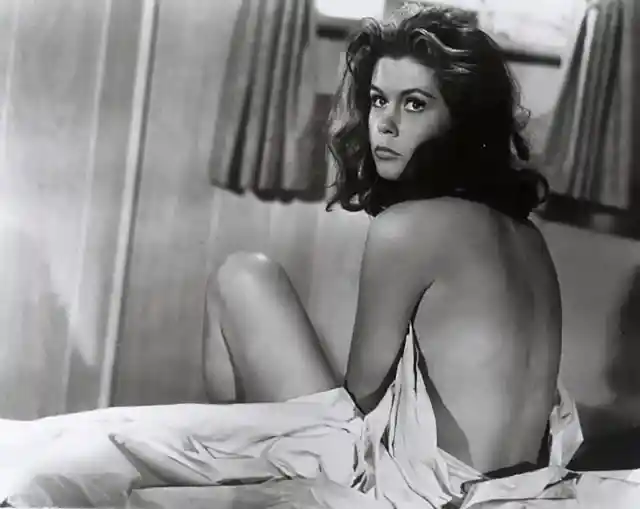
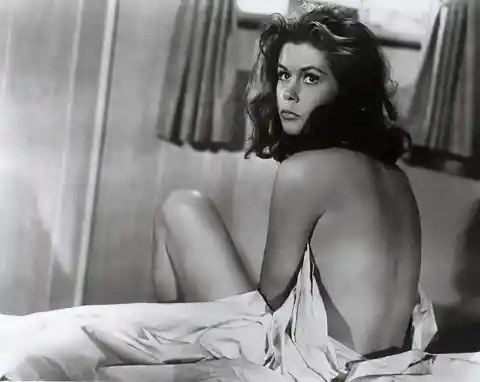
Back in the golden haze of the '60s and '70s, Elizabeth Montgomery shimmered into stardom. She first graced the screen in roles like that of "Johnny Cool," but it wasn't until she charmed her way as Samantha Stephens in "Bewitched" that she truly became a fixture in American living rooms. The show's magic was so potent that, long after the final episode aired, the character of Samantha clung to her like a persistent spell.
Post "Bewitched," Montgomery found herself wanting to close the chapter on Samantha. Not out of disdain — she never hated the role. She believed in her heart she was meant for a tapestry of roles, more than just the nose-twitching witch, yet she felt the viewers weren't quite ready to see her as anyone else. As the series drew to a close, she had grown beyond the confines of the character, eager to explore new horizons that lay ahead in the realm of acting. Her biographer said:
" The show was not the same — if you look at that last season, she’s dragging her feet. She’s just gone. She’s bored out of her skull and you can see it. Now everybody thinks ABC canceled the show because of low ratings. Elizabeth Montgomery canceled the show."
John F. Kennedy was unwell long before his untimely death

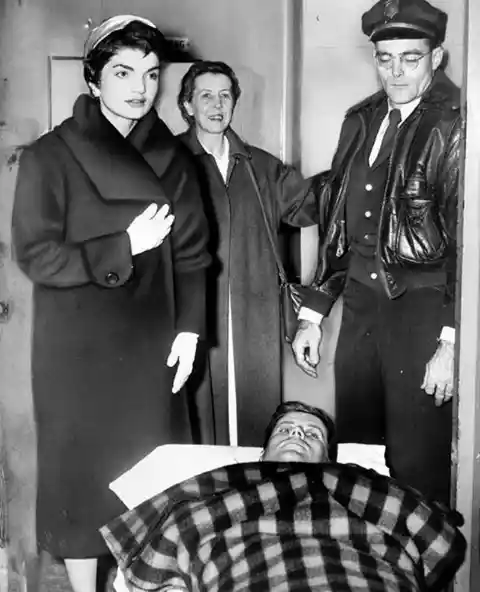
Despite the youthful vigor and charm that carried me to the presidency, I grappled with an unseen adversary: constant pain, a shadow that loomed over my life well before the abrupt end in 1963. My younger days weren't filled with the carefree moments one might expect; instead, they were punctuated by lengthy hospital stays for agonizing intestinal issues. There was even a time when whispers of leukemia filled the sterile hospital air.
This struggle wasn't limited to my insides. My back, a treacherous companion since childhood, turned into a relentless source of anguish. The seeds of this pain were sown early, but they blossomed into a thorny problem during World War II when I hauled a fellow soldier to safety, further straining my already fragile spine.
Ascending to the nation's helm didn't ease my burdens; if anything, my presidential days were marred by pain that was almost constant, every waking hour. Fatigue, nausea, and dizziness often joined the fray, thanks to Addison's disease, a hidden battle that raged within me. Yet, whenever the question arose about my wellbeing, my reply was a study in resilience: I insisted I was in "excellent shape."
A leader of the feminist movement, Gloria Steinem went undercover at the Playboy Club during its heyday
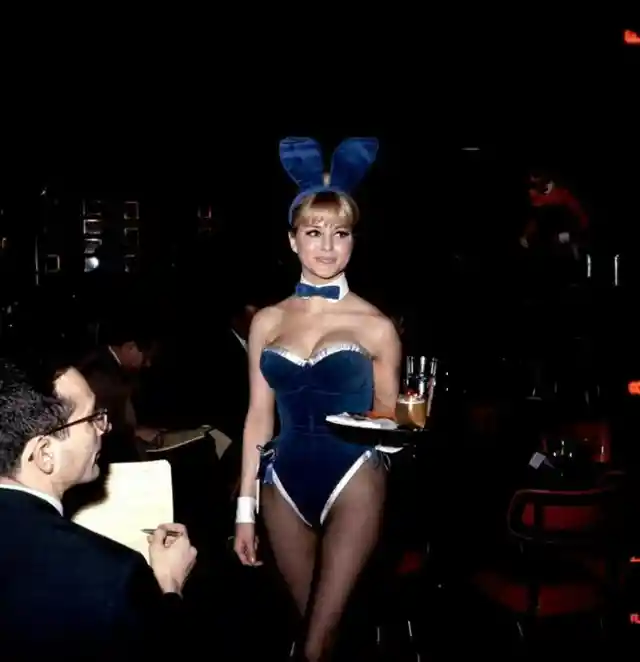

In the year of 1963, Gloria Steinem, a budding feminist essayist with a flair for the audacious, embarked on a daring journalistic endeavor. She delved undercover into the glitzy yet deceptive world of the Playboy Club in New York City. Armed with a pseudonym and without the usual paperwork like a birth certificate or Social Security Number, she infiltrated the ranks to work the club floors. Her mission was to peel back the layers of Hugh Hefner's empire, which boasted a progressive stance on women's issues while paradoxically outfitting them in revealing attire.
Her investigation led to the piece "A Bunny's Tale," a revealing exposé that laid bare the not-so-glamorous reality of the bunnies' daily grind and the enterprise's less than savory business tactics. The assignment was far from glamorous; it required submitting to a demeaning medical examination and relinquishing a hefty cut of her tips to her bosses.
This groundbreaking article, however, didn't catapult Steinem to instant fame. On the contrary, it led to a professional backlash; she found herself shunned by the mainstream publishing world. For years, the only gigs she was offered seemed to circle back to using her physical appeal, a stark irony for someone who had just exposed the objectification within such an establishment.
1923, The last photo ever taken of Vladimir Lenin, who by this photo had three strokes and was totally mute
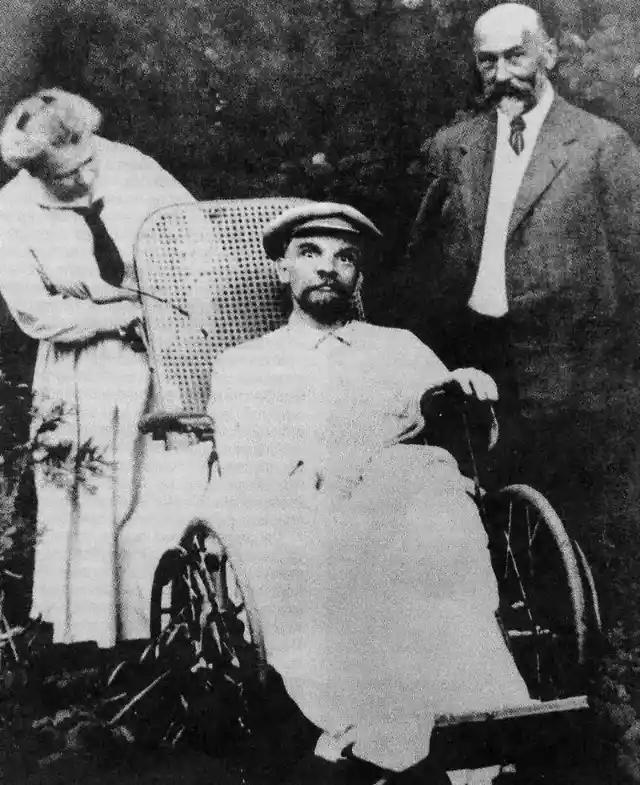
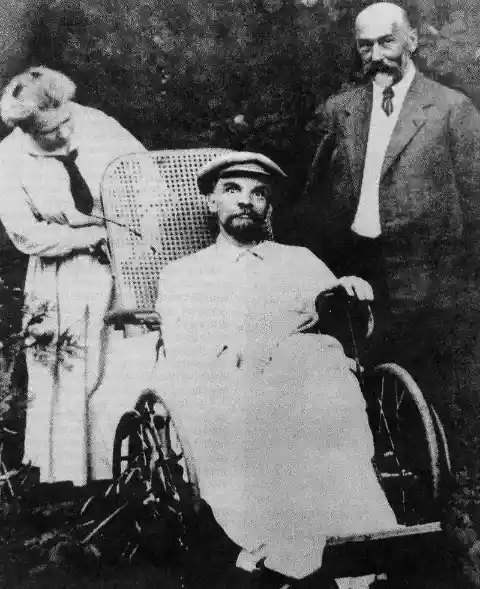
On a spring day in Simbirsk, Russia, a future revolutionary named Vladimir Ilyich Ulyanov, later known as Lenin, was born to a middle-class, educated family. Fast forward to 1917, and that same man had risen to lead the Bolshevik Party, steering a revolution that would end the Romanov dynasty and centuries of royal rule.
As the commander of the Red Army, he tasted victory in the civil war and went on to sketch the blueprint for a new nation, the USSR, stitching together Russia with Ukraine, Belarus, and the Transcaucasus. But even as he was architecting a union that would stand for decades, his health was betraying him. A series of strokes from 1922 to his last breath in 1924 ravaged his faculties, robbing him of speech and clear thought.
Hidden away from the public eye, Lenin's health struggles gave room for Joseph Stalin to tighten his grip on power. And so, at the age of 53, Lenin's chapter came to a close, his life as turbulent and transformative as the era he helped shape.
Caroline Munro is an English actress and model known for her many appearances in horror, science fiction and action films of the 1970s


In the kaleidoscope of '70s cinema, I found myself amidst the eerie glow of Hammer Horror flicks like "Dracula A.D. 1972" and battling bloodsuckers in "Captain Kronos – Vampire Hunter." My face wasn't splashed across every billboard, but my journey through the realms of B-Movies, including a dive into espionage in "The Spy Who Loved Me," had its own flavor of fame. With this notoriety came the relentless pursuit of the paparazzi, their cameras ever-present, ever-intrusive.
Take a look at any snapshot from that era; I was the focal point of prying lenses on both sides of the Atlantic. They watched, they followed, hoping I'd slip. I was loud and clear about one thing: no nudity in my scenes. This stance, firm and non-negotiable, somehow painted a bulls-eye on me for photographers hungry for that one scandalous shot.
My resolve not to bare all, not on celluloid or paper, turned my personal space into a battleground of privacy. A single unauthorized photo could cause a media frenzy, a treasure trove for any paparazzo. So I tread with eyes wide open, always on guard, as every step outside was a step into a world of watchful eyes and waiting shutters.
1945, German Prisoners of War reacting to a film about what happened at concentration camps


As the year 1945 unfolded, the Allies were not just uncovering the dark truths of Germany's concentration camps; they were resolutely shutting them down, rescuing survivors, and meticulously recording the atrocities to ensure the world would never forget or repeat such horrors. Every liberated camp was documented, and the stark, haunting images were shown to the German POWs. This wasn't done out of spite but as a stark lesson in accountability, a part of the "denazification" effort to make them see the grim reality of their cause.
But the process didn't end with just film reels. The German soldiers were also taken to the skeletal remains of the camps, confronted with posters of the deceased inmates, the stark images a silent testament to the lives lost. This harrowing confrontation was not just for shock value; it was a necessary revelation, a forced acknowledgment of the terrible cause they had served. It was chilling, but essential, for them to witness the true extent of their government's actions.
Jessica Alba gets some rays in Miami ☀️


Jessica Alba stepped into the limelight back in the '90s, and while fame came knocking early, it didn't sweep away her desire for a life away from the flashbulbs. It's been a real tug-of-war with the paparazzi, as they've often tried to snapshots of her in unguarded moments.
In a heart-to-heart with NBC, Alba opened up about her skirmishes with persistent photographers, probing reporters, and those relentless tabloid scribes who are always chasing a slice of her life. She made it clear that these invasions of privacy were never part of the deal when she stepped into the star-studded world of celebrity. She explained:
" I think it’s mutual, just because it’s so invasive. It’s not like they’re standing 100 feet away. They’re in your face, not letting you walk, standing in the way when you’re driving. It becomes a situation and it doesn’t need to be."
Princess Diana hides in the back of a limo moments before it crashes on the streets of Paris


In the quiet stillness of a photograph lies the haunting image of Princess Diana's final moments. It's a picture that captures an eerie, unsettling pause just before tragedy struck. Diana, having just returned from a holiday with her boyfriend, Dodi Fayed, found herself in Paris to extend their romantic getaway.
They left the Ritz and took a car ride along the Seine's right bank, not knowing the Place de l'Alma underpass would be Diana's last sight.
As the clock ticked past midnight, their journey took a devastating turn. With paparazzi closing in, the driver lost control. The car veered sharply, striking the underpass's wall before it met the unforgiving concrete of the 13th pillar. The impact was catastrophic. Diana would later succumb to her injuries, her last bewildered words, “My God, what's happened?” echoing the shock and confusion of that tragic night.
Marilyn Monroe ❤️
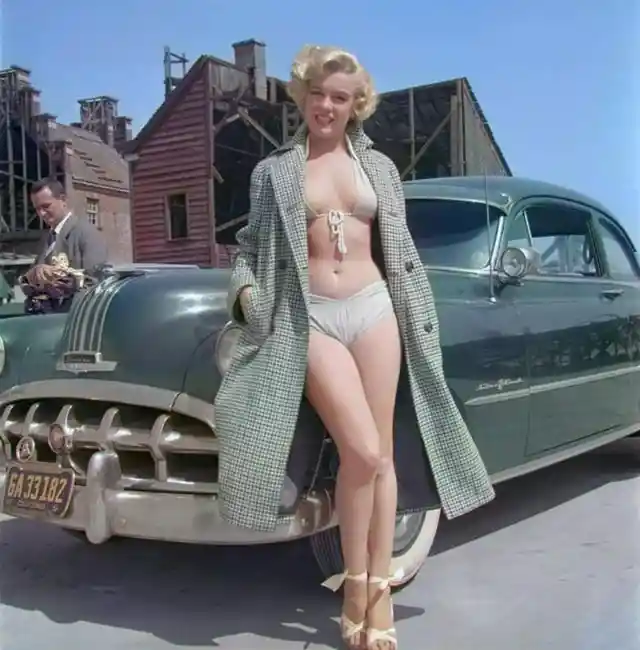

Marilyn Monroe's luminous beauty lit up the silver screen, but behind that glow was a woman paying a steep price. Her platinum locks weren't just a gift from nature; they were the result of relentless bleaching. Her iconic face, too, had been altered surgically to fit a particular "cloud shaped" ideal. Yet, perhaps her most enduring struggle was with an eating disorder that haunted her throughout life.
Her figure, slender and the epitome of '50s glamour, was maintained through a rigid regimen. Breakfast was a spartan affair of milk and raw eggs, while dinner often consisted solely of steak and carrots. Complementing this strict diet were her fitness routines, a cocktail of sleeping pills, and alcohol—a combination that took a toll far beyond the physical. The cost of maintaining the Marilyn Monroe persona was a heavy one, and it weighed on her psyche right up to her last revealing interview. Monroe ominously declared:
" I’m one of the world’s most self-conscious people. I have to struggle… Everybody’s always tugging at you. They’d like sort of a chunk of you."
Two autistic children tied to a radiator, Lebanon, 1982
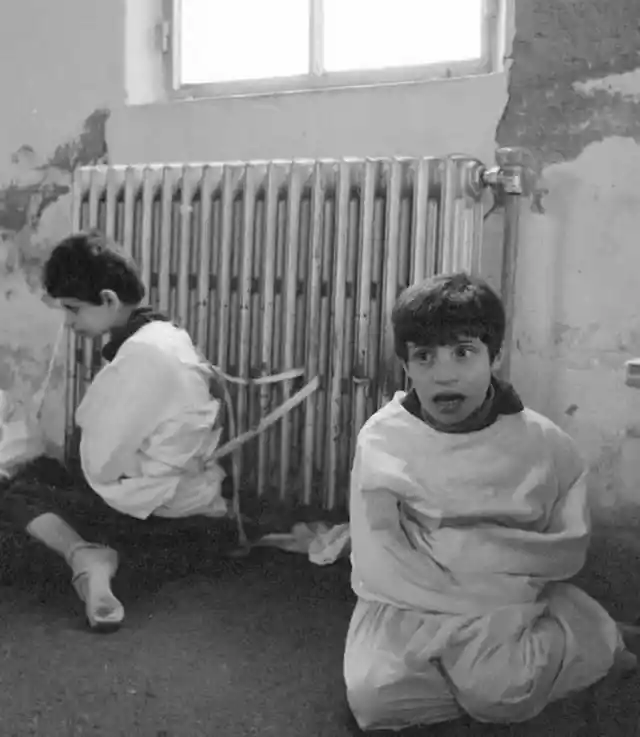
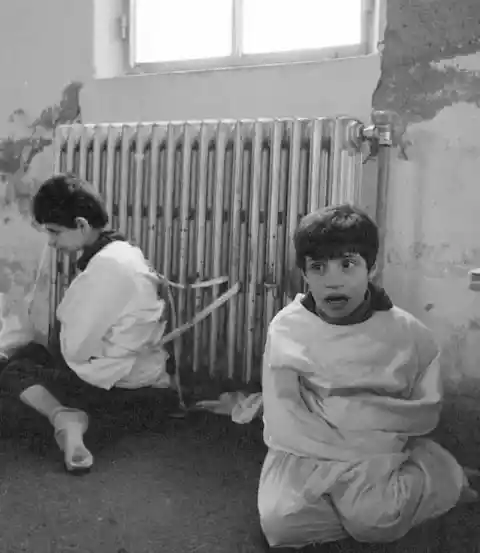
Even in the closing chapters of the 20th century, a time we'd like to think was more enlightened, people, young and old, found themselves trapped in the grim reality of mental health institutions. These places, which should have been sanctuaries of healing, too often became dumping grounds for those society wished to forget.
The chilling image that surfaced wasn't an isolated incident. Tales have trickled down through the years, some as recent as 2019, of children with autism being bound to radiators, left alone in the bleak corners of neglected hospital wings.
The two boys in the photo, their identities and fates unknown, became a haunting symbol of this neglect. No records to tell us if they ever found a reprieve from that place, if they ever felt the relief of care from a better facility. One can only hope that when this photo first emerged in the early '80s, it stirred someone, somewhere, to action—to extend the help and compassion that these boys, and others like them, so rightfully deserved.
A Scandinavian Stewardess examines a new uniform proposal for Scandinavian Airlines in 1958, strangely enough it wasn't approved
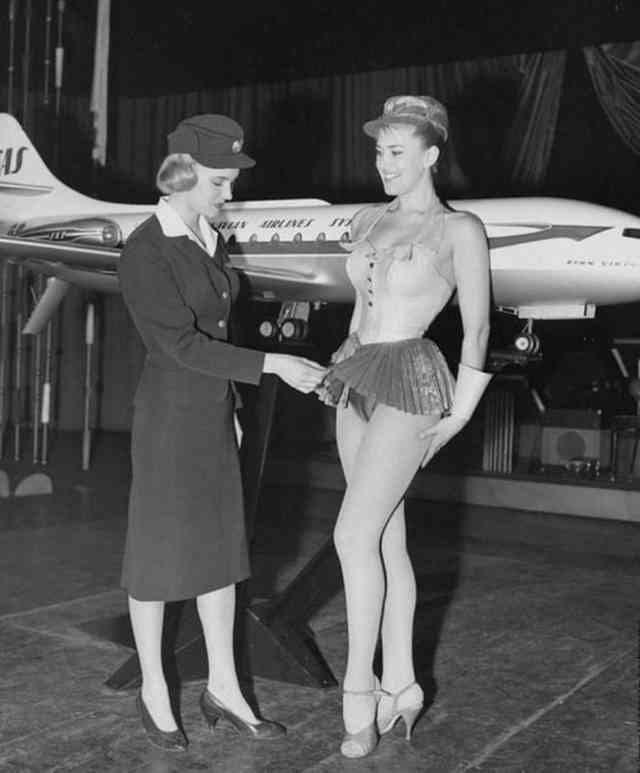
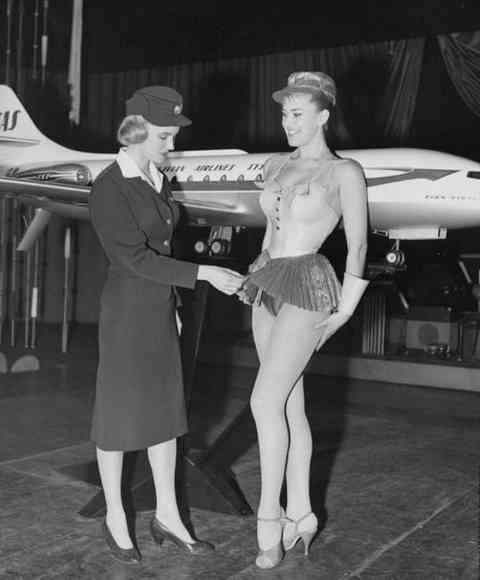
From the early days when aviation was just spreading its wings, the uniforms of stewardesses have seen a revolution. Cast back to the '50s and '60s, and you'd find airline attendants dressed up like they'd stepped out of a man's fantasy, right there at 30,000 feet. They were there to cater, to charm, stripping away their own stories to play the part of the perfect hostess.
The job's uniform began with outfits that were suggestive, though never quite as over-the-top as this, and it wasn't just the clothes. The way they talked, the way they walked - every interaction was a performance.
As the decades rolled on, the style evolved. Pillbox hats and A-line dresses gave way to the wild prints and vivid hues of the '70s, mirroring the era's push for both sex appeal and women's independence. But then the '80s ushered in a new era. Airline fashion took a sharp turn towards the practical, reflecting a shift in the industry to a profession open to all, a job that welcomed everyone as equals, both in the cabin and the cockpit.
Mystical Tails and Beluga Tales


Mermaids, with their alluring blend of human and aquatic traits, often come to mind as ethereal beings adorned with seashell garments. Yet, it's thought that these mythical creatures were born from the minds of sailors who glimpsed a Beluga whale beneath the waves.
To most, confusing a hefty whale with a siren of the sea might seem a stretch, but then there's this peculiar photo. It seems to capture what looks like a pair of legs beneath the whale's pale skin. Of course, it's a trick of nature, not an actual mermaid's tail. The odd, leg-like appearance probably comes from the whale's blubber "rails" hidden just under its skin. Or maybe, it's a quirky accumulation of ventral fat, unique to this one whale. But it's images like these that fuel our fascination with the ocean's many mysteries and the legends born from its depths.
A German soldier disobeying direct orders to help a small boy across the Berlin Wall
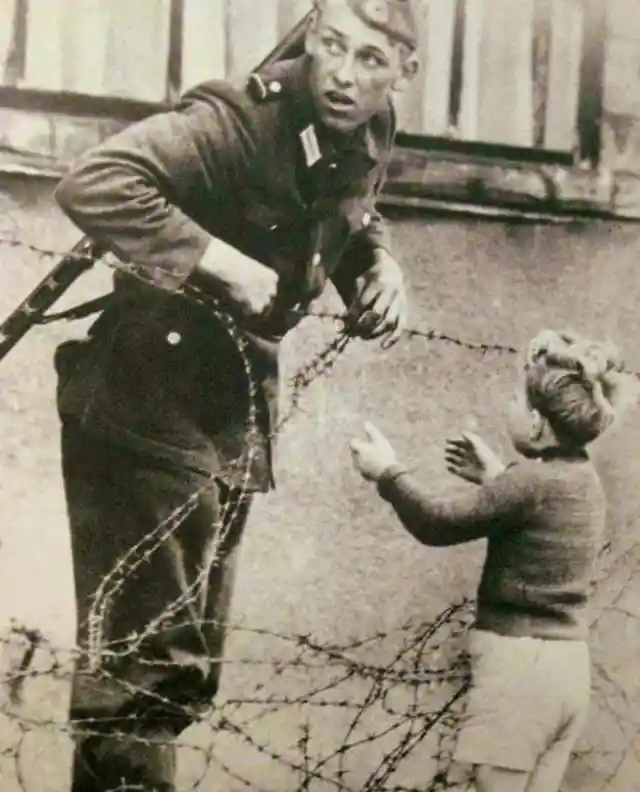
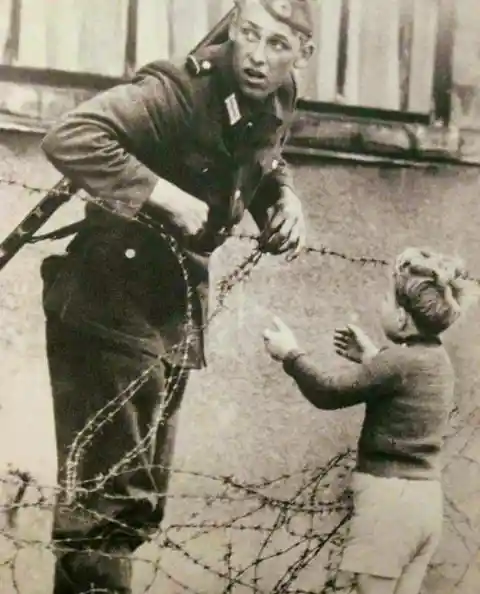
In history's grip, some moments echo with the cold choices of governments. Picture the scene on August 12, 1961—military forces in Germany began sealing off East from West Berlin. As the city split, people were caught on one side or the other, their fate sealed by their location. Imagine being that child in the snapshot, stranded away from family because a parent left you on the wrong side of a burgeoning wall.
Crossing the divide was forbidden, with the threat of arrest or worse hanging over anyone who dared. But humanity has a way of shining through the cracks. A soldier, whose duty was to prevent such crossings, couldn't turn his back on the boy in the photo. Defying orders, he assisted the child, navigating the cruel barbed wire to reunite him with his family.
The soldier's fate remains a whisper in history—he vanished from his post, likely disciplined for his act of compassion. Yet, his deed stands out as a moment of defiant kindness in the shadow of the Berlin Wall.
Ian Curtis with his daughter, days before he hung himself in 1980
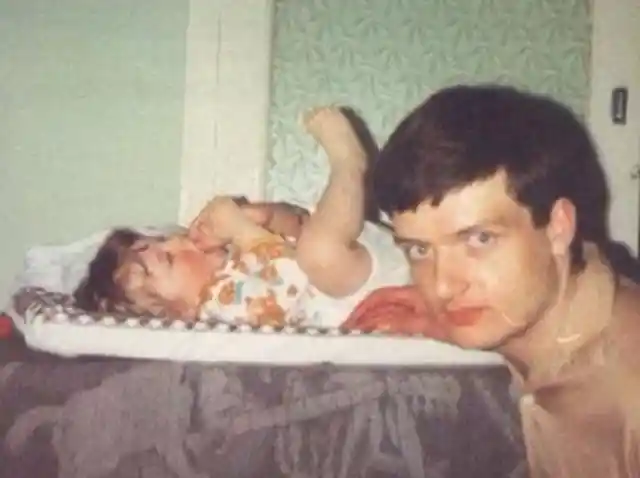

Ian Curtis's life was a quest for normalcy amid the chaos of fame. Wedded at the tender age of 19, he found himself catapulted into the limelight as a lead figure in the English music scene just three years later. But this newfound stardom only seemed to deepen the rift between his personal life and public persona. Tragically, Curtis chose to end his life, leaving behind a daughter who barely had the chance to know him.
In the wake of his passing, his widow, Deborah Curtis, shared her own battle with depression in her 1995 writing. She understood the darkness that had enveloped Ian because she had been there too. While he toured, riding the waves of success, Deborah was the anchor at home, striving to keep their family unit intact. She wrote:
“ Our existence had become boring and the fact that we both hated our jobs didn't help. I became very depressed. Sometimes I was unable to stifle the tears on the long bus journey home. We had mistakenly saddled ourselves with a mortgage and a stability we weren't ready for.”
UFO featured some of the sexiest space babes


In 1970, a British TV series called 'UFO' catapulted viewers a whole decade forward into the high-tech world of 1980. This show wasn't about disco or neon, though; it chronicled the covert exploits of SHADO, the Supreme Headquarters Alien Defense Organization. These were the guys tasked with thwarting sinister aliens who had a nasty habit of snatching humans for organ harvesting—not your typical sci-fi invaders.
Here's the kicker: SHADO's base of operations was craftily hidden beneath a bustling film studio. That's right, while actors roamed above, delivering lines and wearing makeup, below them a clandestine war against extraterrestrials raged on. Thinking about it now, the idea of a secret military outfit operating under the guise of movie magic doesn't really shock, does it? It's almost expected with the way our modern world spins.
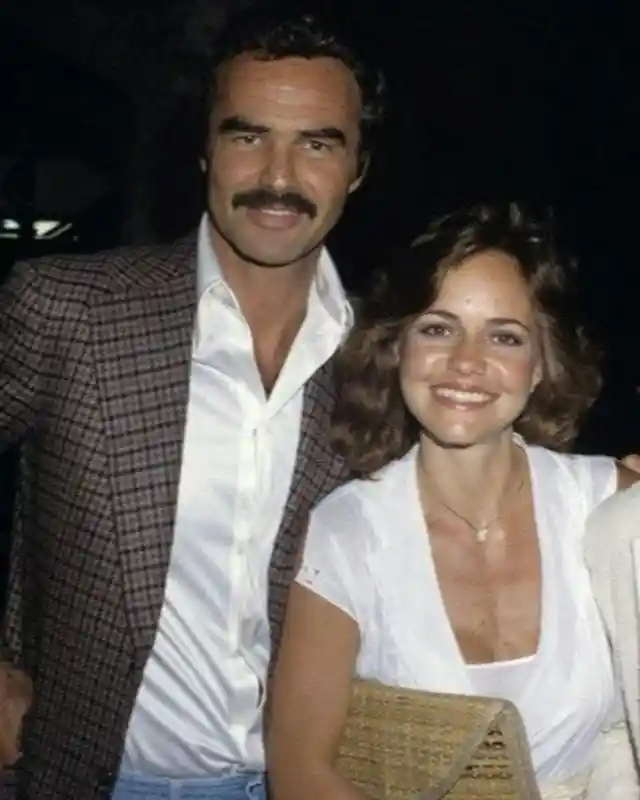
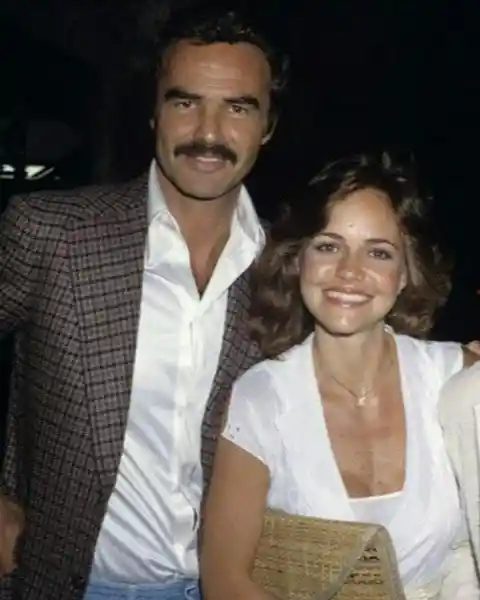
They seemed like night and day—he, the embodiment of a gruff and rugged masculinity; she, the charming pixie of the silver screen. Yet, when Burt Reynolds met Sally Field on the set of 'Smokey and the Bandit,' something clicked. They found a bond so strong that for a while, they seemed like two halves of a whole, inseparable in both life and the limelight.
Their on-screen chemistry spilled over into reality, leading them to co-star in a total of four films. But like all tales of passion, theirs shifted gears in 1982, as they went their separate ways, finding new partners and new paths. Despite the split, Reynolds harbored a deep affection for Field, often expressing that she was the one that got away, the love of his life. In the aftermath, he couldn't help but rue the loss, wishing he could've steered their story to a happier ending. When the topic of Reynolds' undying love came up, the affection and nostalgia were palpable. Field said:
“ I was always flattered when he said that, but he was a complicated man... There are times in your life that are so indelible, they never fade away. They stay alive, even 40 years later. My years with Burt never left my mind. He will be in my history and my heart, for as long as I live.”
The Life and Laughs of a Master Clown
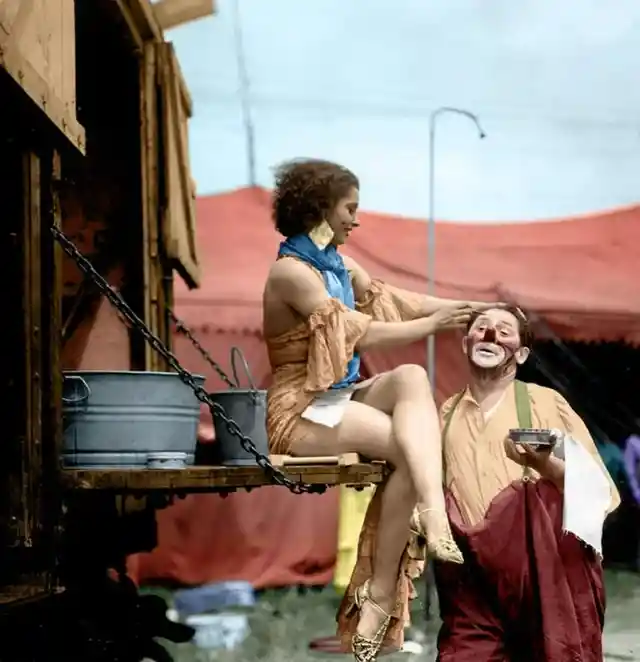
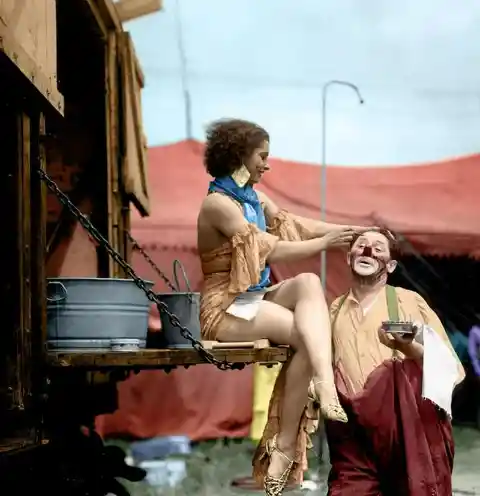
Otto Griebling's life was a canvas painted with broad strokes of joy and performance. After leaving Germany for America's shores, he dove into the world of clowning, studying under the watchful eye of Albert Hodgini in the small town of Baraboo, Wisconsin. Hodgini wasn't just a mentor; he was a family man, and his kin were part of the act, weaving their lives with Griebling's in a tapestry of circus history.
Initially, Griebling soared as a high-flying clown, but fate took a twist when a fall nearly ended it all. This brush with tragedy meant he had to either reinvent his act or hang up his clown shoes for good.
Choosing resilience over retirement, Griebling stayed close to the Hodgini troupe but transformed into a "sad clown." He traded acrobatics for a quieter spectacle, haunting the circus crowds in search of the elusive "Miss Jones" to hand off an ever-shrinking block of ice. As the ice dwindled, so did the space between Griebling and the audience, until at last, someone's heart would melt enough to help him out.
Bill Bixby and Lou Ferigno on the set of The Incredible Hulk
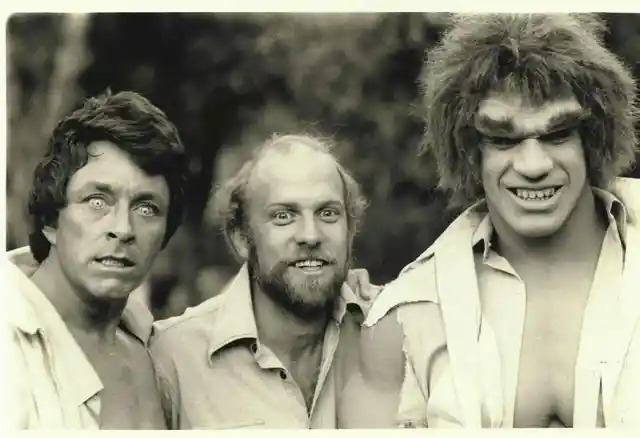

Leaping from the vibrant pages of Marvel Comics, the Incredible Hulk might have been born of fantasy, but Bill Bixby lent the character a gripping reality. He didn't just play the Hulk; he embodied the tumultuous battle of a man wrestling with his own monstrous alter ego. On the screen, Bixby's portrayal was so authentic, so raw, that you couldn't help but be pulled into the narrative. It was as if you were witnessing a real person, not a character, grappling with the chaos of a beast within. Ed Robertson, television historian, author, and host of the TV Confidential podcast explained:
“ That ‘real’ quality he brought forth comes from a very deliberate approach he took as a performer. Certainly, when he was Eddie’s Father, you believed that he was this single dad trying to raise a son in the right way. Even something like The Incredible Hulk — and this goes as much to the team behind it as it does to Bixby — you believe, even though it was a ‘comic book story,’ that he was this man living with the agony of this dual personality. Not being able to control what happens when he Hulks out made it real. There’s a good reason the show lasted five years.”
Elvis: The King's Heartbeat
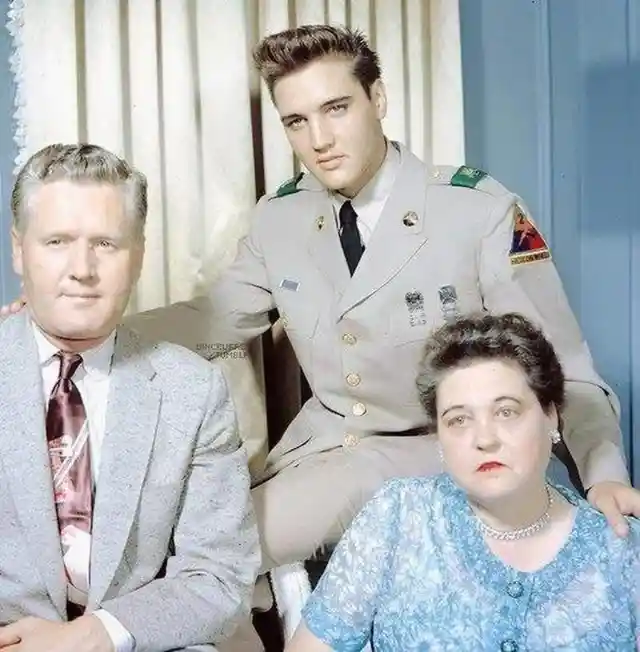
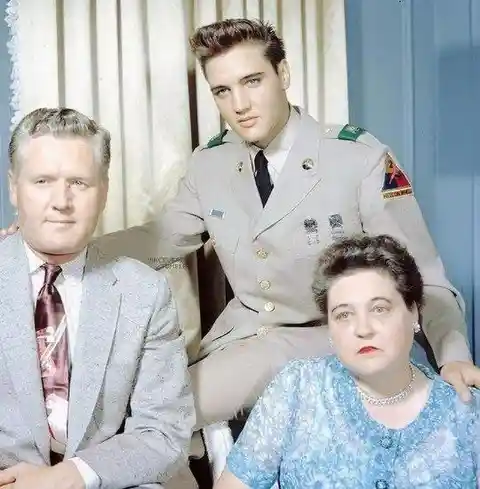
For Elvis, the king of Rock 'n' Roll, nothing eclipsed his love for his parents. Growing up, his mother and father were his sanctuaries, his allies against the world, even if that bond made him an easy mark in the schoolyard. He was so attuned to his parents' emotions that one glimpse of his mother's grief over a local tragedy had him hanging up his football cleats for good.
At the ripe age of 19, when his voice began to turn heads and open wallets, he didn't hesitate to ensure his parents wouldn't have to fret over finances again. "They took care of me for 19 years," he'd say, "now it's my turn."
But the wheel of fortune spun, and soon after this snapshot in time, his mother, Gladys, succumbed to illness. The heart of The King was shattered, a loss from which he never truly recovered. With his mother gone, Elvis was left to walk with the shadow of mortality at his side. He said:
" I don't know why she had to go so young. But it made me think about death. I don't feel I'll live a long life. That's why I have to get what I can from every day."
Actress Jocelyn Jackie Lane, 1964


I chased the glitz and glamour of Hollywood, hustling for years until 1965 when fate had me sharing the screen with Elvis in "Tickle Me." That gig was a stepping stone to an even more storybook chapter: in 1971, I traded vows with Prince Alfonso of Hohenlohe-Langenburg. Just like that, I was no longer just Jocelyn Lane; I was a princess, a living, breathing chapter out of a fairytale.
But fairytales are for storybooks, and my story took a turn. By 1985, the prince and I had parted ways, and the marriage dissolved into the pages of history. The settlement? A cool million dollars. Yet, I couldn't help but remark that it was "not fitting for a princess." With my royal chapter closed and my princess title shelved, I poured my creativity into crafting jewelry, setting up shop across the ponds in London and California.
Sharing the limelight with Elvis and donning a real tiara might seem like a charmed life, but even princesses face the unexpected. It's bittersweet, this shift from the sparkle of public life to a quieter existence, like the last page of a fairytale that leaves you wondering, "What happened next?"
1957, Alfred Hitchcock serving tea to the MGM Lion
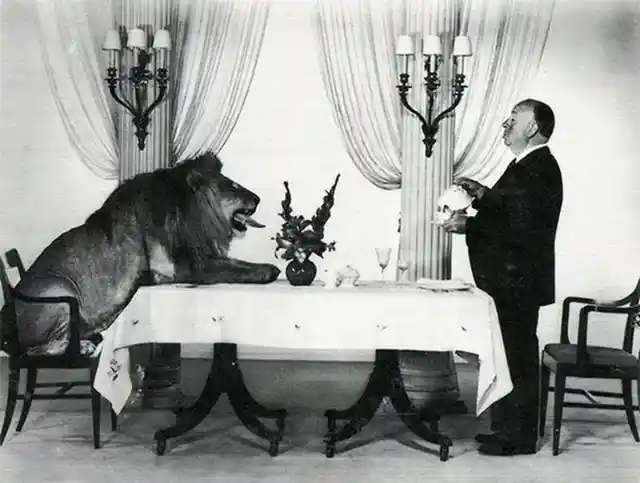
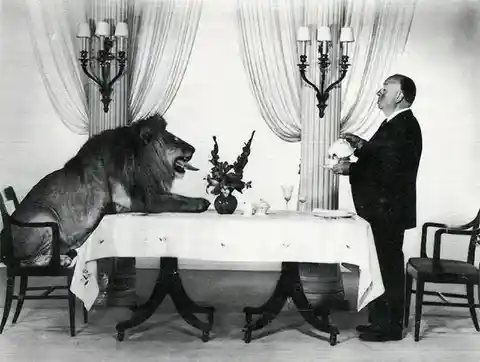
In the year of 1958, Clarence Sinclair Bull captured a peculiar moment: there I was, Alfred Hitchcock, the master of suspense, pouring tea for Leo, the MGM lion. This quaint little tea party wasn't just for kicks; it was a clever publicity stunt for "North By Northwest," my singular dance with MGM. Now, whispers have swirled around that I took a stab at directing MGM's iconic roaring lion intro, but let's clear the air — that's pure fiction.
Dig a bit into MGM's history, and you'll discover that Leo was but the final roar in a lineage of seven regal lions. The word on the street was that these kings of the jungle didn't have it too rough, although, it's anyone's guess what the animal rights standards were back in the days when the silver screen was just finding its sheen. But there's a heartwarming tidbit: the very first MGM lion, known as "Slats," reportedly found his final resting place on the estate of his trainer, Volney Phifer — there must have been a bond there, something deeper than show business.
Leo, well, he's more than just an anecdote from the past. That's his face that greets you at the start of every MGM film even now, and legend has it he was a gentle giant, trusted enough to roam sets with children. Maybe it's a sign that behind the scenes, those MGM lions had their share of the limelight and love.
An Angel's Test of Strength


Life as an Angel on the iconic show "Charlie's Angels" was never a walk in the park, but camaraderie wasn’t just a script deep. Off-screen, we were a tight-knit trio, especially when the spotlight dimmed and real life took the stage. As one of the trailblazers on that hit series, I've always hoped to light the way for the next generation of young women. Yet, when the tides turned and I faced my battle with cancer in the early 2000s, it was this bond with my fellow Angels that became my rock.
I was blindsided by the diagnosis. Fitness and health had been my steadfast companions, so the news came like a thief in the night. It was in the midst of this turmoil that I paused and peered at life's grand canvas, seeing it with a clarity that only such a jolt can bring. The diagnosis was a wake-up call, a moment that urged me to evaluate everything with a fresh perspective.
“ The craziness of it was that I was so healthy, so energetic. How could this happen? I think people see you a certain way and that wasn’t part of the picture for my loved ones…but I guess it never is part of the picture.”
A Star's Intuition

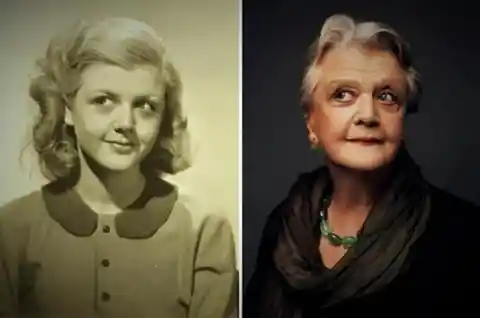
Angela Lansbury is a name that rings familiar in the halls of entertainment, echoing from the bright lights of Broadway to the intriguing corners of "Murder, She Wrote." But her journey could have taken a very different route. As a revered figure in the theater, stepping into the shoes of a TV detective was advised against by every well-meaning soul around me.
My marquee name was synonymous with Broadway success in the '70s, which made the offer to lead "Murder, She Wrote" a controversial one. Agents and advisors, they all had their say, pleading with me to pass on the role. Yet, with years of treading the boards under my belt, there was an instinctual tug when I read that script—a whisper that this was something special. I went against the grain, trusting my gut over the chorus of caution.
And there it was, the proof in the pudding, or should I say, the proof in the plot. In my own words to the Daily Mail, I disclosed the secret sauce behind the show's success and its impressive run of over 200 episodes. It wasn't just a role; it was a chapter of my legacy.
“ I know why [Murder, She Wrote was a success]. There was never any blood, never any violence. And there was also a satisfying conclusion to a whodunnit. The jigsaw was complete. And I loved Jessica’s everywoman character. I think that’s what made her so acceptable to an across-the-board audience.”
Natalie Wood monkeying around, 1960s


The 1960s were golden for Natalie Wood. She was soaring, having gracefully navigated the tricky leap from child prodigy to a silver-screen siren with undeniable talent. Doubters had pegged her as forever the girl from 'West Side Story' and 'Rebel Without a Cause,' but by '69, with 'Bob & Carol & Ted & Alice,' she proved she was a powerhouse in her own right.
Yet, even as her star blazed in the professional skies, Natalie's personal world was a roller coaster of highs and lows. Her heart had its share of wanderlust, leading her through multiple marriages, including one with British producer Richard Gregson, and not one, but two rounds with Robert Wagner. Her romantic life never quite found the spotlight, often overshadowed by the darker scenes of her past, including a harrowing encounter with assault as a teen—a stark contrast to the bright lights of her public life. Her sister later said:
" Natalie 'hated' her former screen idol afterward, 'shuddering' if she heard his name. She would keep the horrible secret, and behave as if nothing happened whenever their paths intersected, too schooled by Mud [her mother] in the politics of Hollywood to cross a powerful movie star."
An IRA volunteer on her active service in West Belfast in the 1970s


In the early 70s, Northern Ireland's streets were morphing from peaceful lanes into the frontlines of civil strife known as "The Troubles." Amidst the chaos, a striking image emerged: a woman, seemingly a volunteer with the Irish Republican Army, captured in a moment of defiance in 1972.
It was an oddity, this photo. The Provisional IRA was a brotherhood, its ranks filled exclusively by men. Women were the unseen sinews of the organization, ferrying arms and messages, supporting from the shadows rather than bearing arms in the streets.
The man behind the camera, Colman Doyle, in the twilight of his years by 2020, recalled little about the snapshot. Yet, he vividly remembered the encounter in Ardoyne, a republican bastion in North Belfast. As he traced his steps back to the city's heart, a sudden crack split the air—two shots from the young lady's gun. Then, like a specter, she disappeared, leaving behind a photograph that spoke volumes of her brief but bold rebellion.
An Italian Girl from Tunisia - Claudia Cardinale
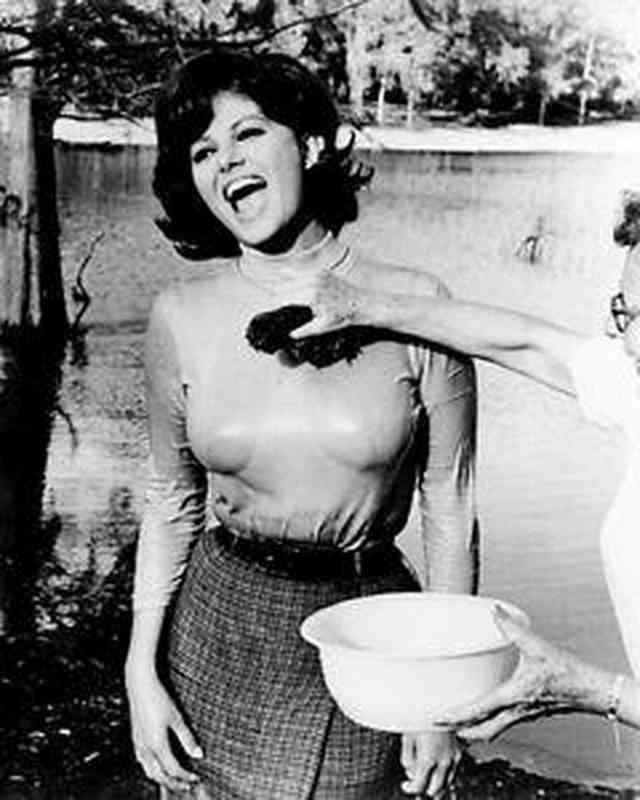

Claudia Cardinale's allure transcends her cinematic persona; she's a star whose life off-screen is as compelling as her on-screen characters. Her tale begins under the Tunisian sun, where in the 1950s she blossomed as the "Most Beautiful Italian Girl in Tunisia." But the victory's sweetness was tainted by a shadow—the discovery of her pregnancy at 17, the result of a painful liaison with a man years her senior.
Undaunted, Cardinale chose to keep her baby, even as she grappled with the uncertainty of her acting future. That's when destiny played its hand. Franco Cristaldi's Vides production company offered her a lifeline—a seven-year contract that not only shielded her from the prying eyes of the Italian media but also exacted a heavy toll.
In exchange for the chance to quietly welcome her child into the world in England's privacy, she agreed to a silence that blanketed her personal life. Throughout her time under contract, her lips were sealed about her child, who grew up in the care of her own family, far from the glitz of her burgeoning film career.
A real Japanese Samurai archer in 1870 having one last good photo of him before the government ended stipends for the Samurai
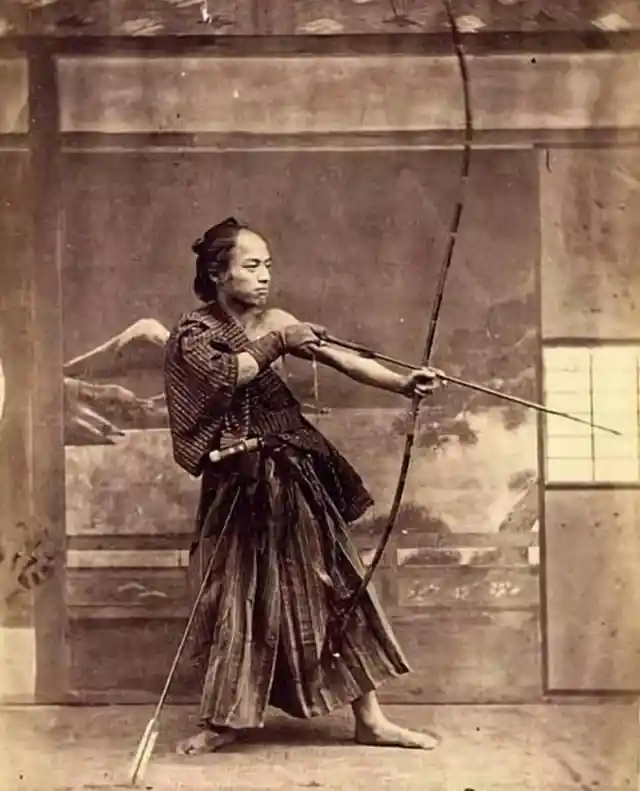
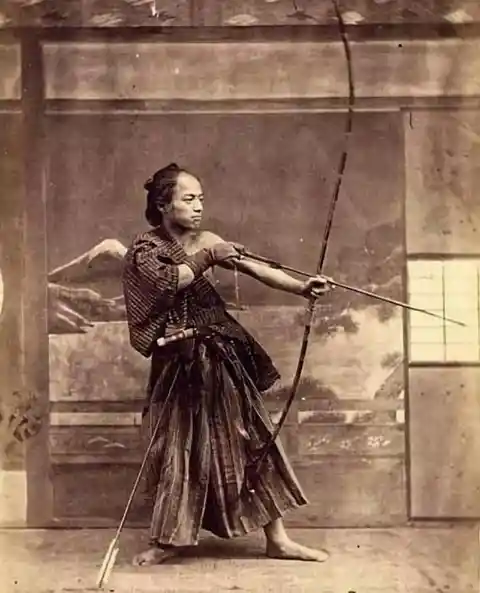
In the tapestry of Japan's rich history, the Samurai hold a place of enduring fascination. Just a few years after this photo was snapped, a significant change swept over these warriors. The Japanese government, in a move toward modernization, shifted its focus from the Samurai to a more inclusive military force, opening its ranks to all citizens.
This change marked the end of an era for the Samurai. They sought to capture their legacy, posing in their traditional attire for photographs, a bid to immortalize their status as members of an elite class. These final portraits were more than just images; they were poignant reminders of their dwindling days at the military's zenith.
As Japan marched towards modernity, the Samurai, once revered and feared, found themselves adrift in a changing world. The nation's evolution left little room for these noble warriors, and they watched as their era, one of honor and sword, quietly faded into the annals of history.
A Harlem Debutante Ball in the 1950s in the 1950s
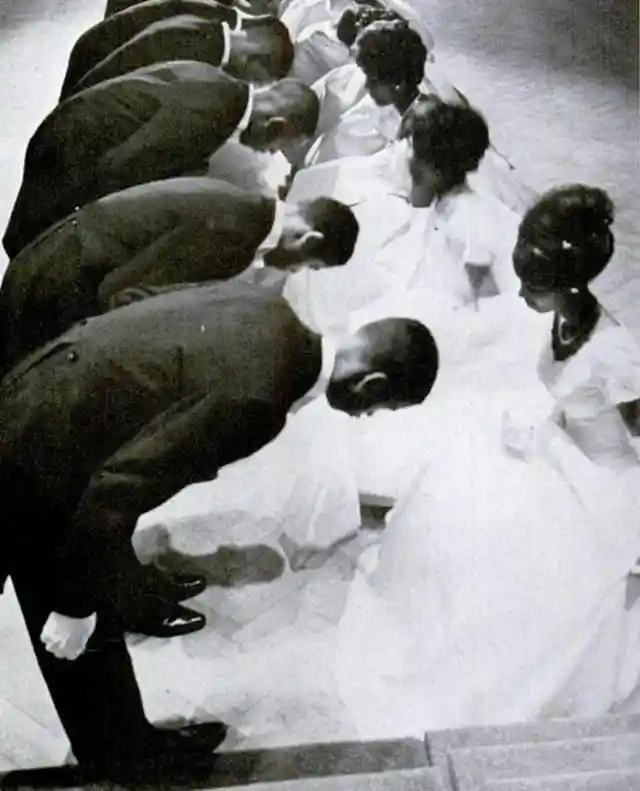
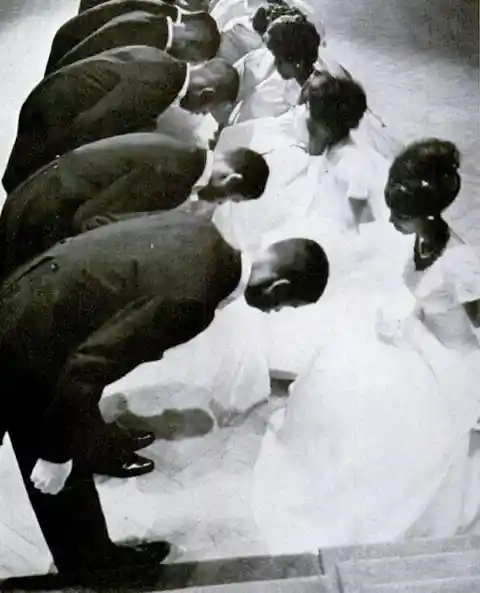
Debutante balls, those grand entrances into society, are often associated with a certain elite class, but in the vibrant heart of 1950s Harlem, they were a cross-cultural affair. Wealthy African-American families in New York found their own opulent way to introduce their daughters to society.
The Renaissance Ballroom, an emblem of elegance on the corner of 138th Street and Adam Clayton Powell Blvd., was the stage for these glittering events. There, amidst the grandeur, a different narrative unfolded—one that defied the turbulent times outside its walls, where the black community often found itself under siege.
In an era marred by racial strife, where people of color were cast as outsiders, these balls painted a contrasting picture, one brimming with dignity and shared tradition. The young women in this snapshot were daughters of distinction, embracing a rite of passage that so many were denied. It's a slice of history that slipped through the cracks of the mainstream narrative, a fascinating window into a world where grace and celebration knew no color line.
An Ally half-track bearing the head of an Adolf Hitler statue near the end of WWII, November 1944


As World War II drew to a close, Europe and Asia lay in shambles, their landscapes scarred with the remnants of conflict. Statues and structures, once symbols of permanence, were reduced to debris. Among them, curious relics of the enemy—like busts of Hitler—caught the eyes of Allied soldiers.
It was a time of bittersweet homecomings and somber mass burials, a time when the monumental task of rebuilding from the ruins was just beginning. Some soldiers, amidst the chaos, claimed these fallen idols as spoils, a tangible piece of victory, despite the murky ethics and legality of such plundering.
In a telling photograph, the deep-seated contempt for the Nazi regime, and for Hitler himself, was unmistakable. It wasn't uncommon to see a soldier flaunting the Führer's severed stone head, mounted like a trophy on the hood of a jeep, a macabre emblem of triumph over tyranny.
Iceland's Cinematic Secret: A Viking Village Frozen in Time
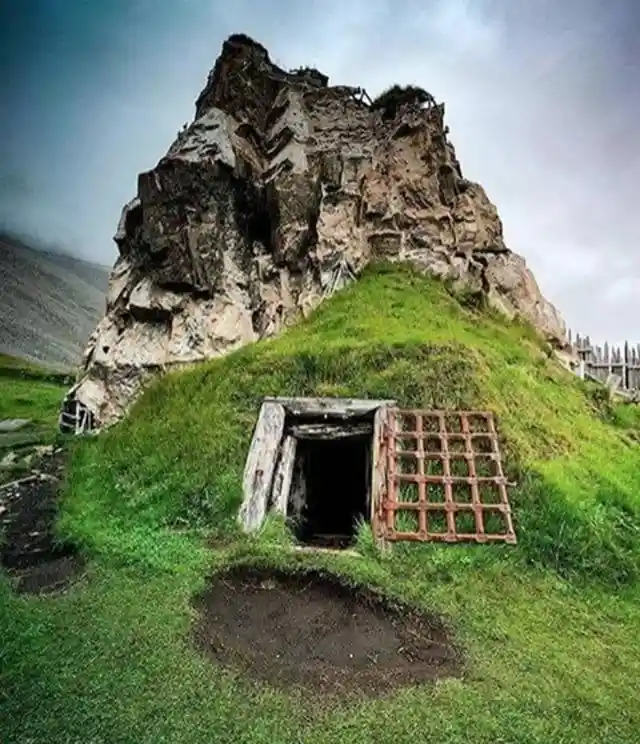

Nestled between Höfn and Djúpivogur, there's a path that leads to what seems like a gateway back to the Viking Age—an intricate tunnel, as if carved by ancient hands. But don't be fooled by its aged appearance; it's a modern marvel, a film set born from the vision of a movie that remained a dream. In 2010, this Viking village was meticulously crafted, intended for the silver screen, yet it now stands silently, waiting for visitors to breathe life into its deserted streets.
The land, owned by a local farmer, was transformed into this forgotten world, and though the cameras never rolled, the farmer found a silver lining. He opened the gates of this make-believe world to the curious and the wanderers, inviting them in for a modest fee to wander through a slice of history reinvented.
While Vikings may not have burrowed through Iceland, their legacy of subterranean passages is real across Europe. Take York, a city with Roman roots, where beneath the cobblestones lies a labyrinth of hidden tunnels. These were the shadowy veins through which Vikings and Romans once moved unseen, places where whispers of gambling and conspiracy once echoed—a stark contrast to the serene beauty of Iceland's phantom set.
Tad Lincoln: The White House's Youngest Prankster
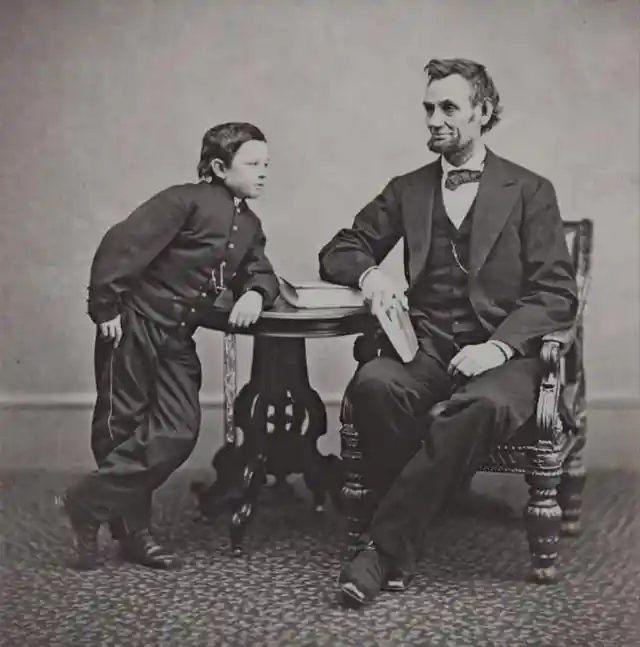
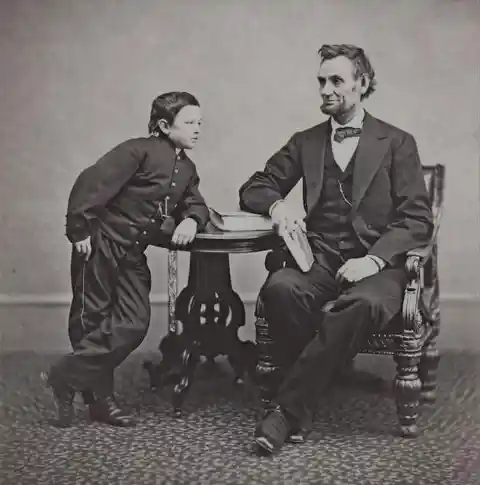
Tad Lincoln, known affectionately as "Tad" by his father, President Abraham Lincoln, was a bundle of joy and mischief in the White House. The corridors of power became his playground, where he often burst into high-profile meetings, playfully taxing politicians for an audience with the President, and amusing himself with a menagerie of pets.
But the light that Tad brought to the presidential residence dimmed tragically with his father's assassination. The nation plunged into mourning, and young Tad felt the shadow of loss more deeply than anyone. The once-cheerful boy who romped freely through the halls of power now navigated a world of sorrow, a stark reminder of the personal toll hidden behind historical events.
He wrote of the sudden realization that he was on his own:
“ Pa is dead. I can hardly believe that I shall never see him again. I must learn to take care of myself now. Yes, Pa is dead, and I am only Tad Lincoln now, little Tad, like other little boys. I am not a president's son now. I won't have many presents anymore. Well, I will try and be a good boy, and will hope to go someday to Pa and brother Willie, in Heaven.”
The Tale of Two Architects


In the heart of the 19th century, a dream took shape in the form of the Sagrada Familia, a church in Barcelona that would become a testament to devotion and artistry. It was José María Bocabella, the fervent president of the Holy Brotherhood, who first envisioned this sacred structure. The original design, steeped in the grandeur of Gothic style, was entrusted to Francisco del Villar, the diocese's chosen architect. In 1882, he laid the foundations, eager to see his vision ascend stone by stone.
But as fate would have it, a clash of ideas between Bocabella and Villar turned the dream sour. Villar's hands were prised from his creation, leaving him with a heart heavy with unfulfilled dreams. Enter Antoni Gaudi, a man whose passion for architecture was rivalled by none. The Sagrada Familia became the vessel for his life's work, a project he nurtured until his last breath on June 10, 1926. Under Gaudi's touch, the church burgeoned into an edifice so magnificent that whispers of "the cathedral" danced among the awestruck crowds.
As the Sagrada Familia stands proudly against the Barcelona sky, it is a silent homage to the spirits of two architects—where one's dream ended, another's soared.
A Timeless Lock
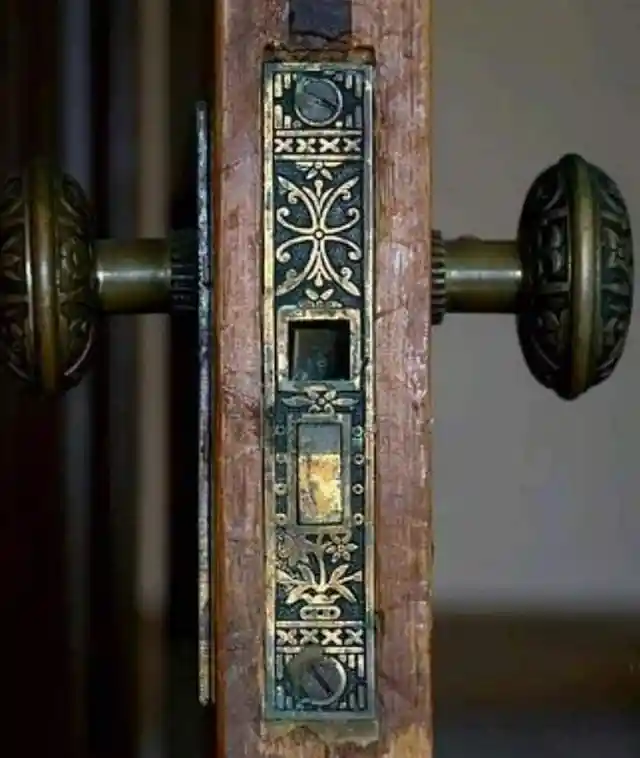
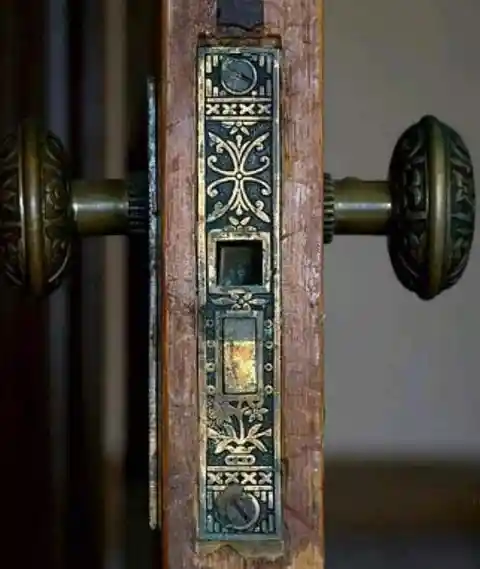
And now, let me draw your attention to a relic of bygone craftsmanship—a lock. Not just any lock, but one with an ornate visage, meant for the inside of a door, hidden from view. "Take notice of the craftsmanship behind this lock," they said, marveling at the dedication to beauty unseen. It's a craft that seems almost lost in time, a love for creation that didn't scream for attention.
Such artistry is a rare find in our fast-paced world. To stumble upon an object crafted with such care, where the maker poured their soul into the work, is to touch the essence of a time when art was a silent gift to the world. This antique lock, with its intricate design, stands as a quiet reminder of what we've left behind. You'd be pressed to find anything like it today, or a creator who whispers into their work, "You'll struggle to find a lock that's this beautiful."
Prince, at 17 years old, starting his iconic career
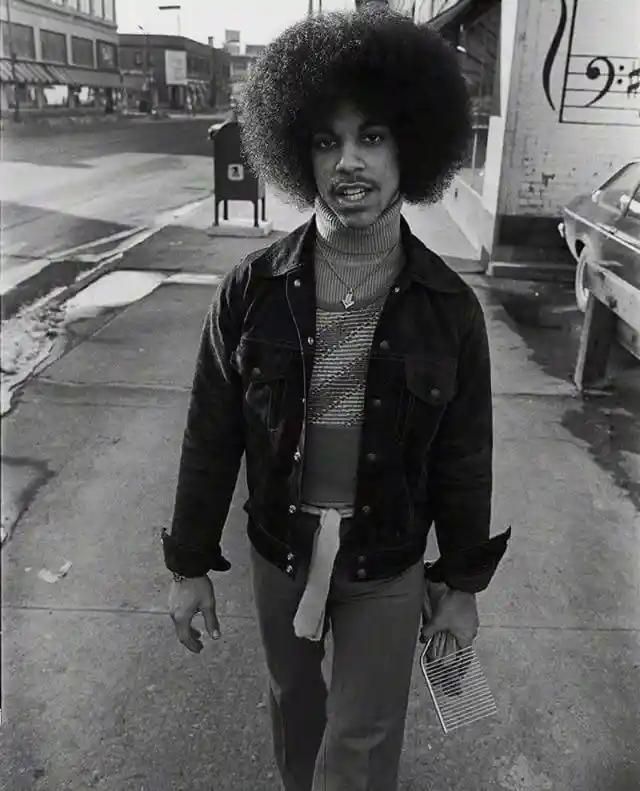
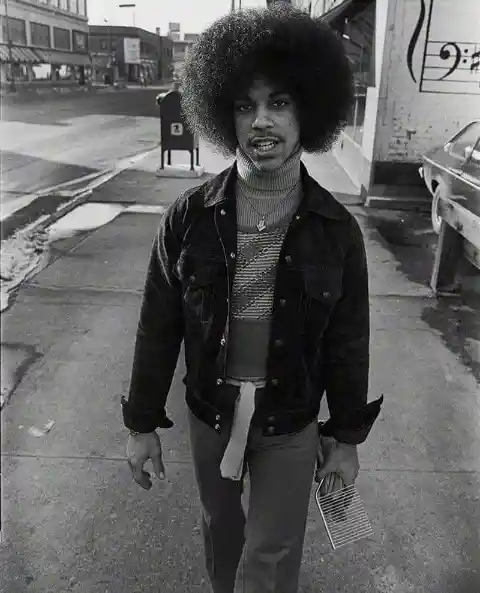
Back in the vibrant Minneapolis music scene, a teenage prodigy caught the eye of Pepé Willie, the man at the helm of 94 East and, by chance, the husband of Prince's cousin. Willie, seasoned in the ways of rhythm and grooves, couldn't quite wrap his head around the sheer talent of this young artist. The kid was exceptional, his flair for music undeniable, and Willie knew a star when he saw one.
One evening, after the studio lights had dimmed and the echoes of an all-day jam session lingered in the air, Willie found himself trailing behind Prince on the journey home. He was driven by a mix of curiosity and awe, compelled to understand the enigma wrapped in a high school jacket. It was in those quiet moments, following the hum of Prince's bike, that Willie realized he was in the presence of someone truly extraordinary. Willie told Rolling Stone:
“ One night, at around 10:30, I tried to call Prince and I didn’t get an answer. So I went over to his house, because he wasn’t far from where I lived, and I saw his car parked in front of his house. I rang the bell and knocked on the door and I didn’t get an answer. Then I heard this little tapping sound, and I went around to the side of the house and I peeped through the basement window, and Prince was down in the basement playing drums. I mean, he was wailing away. And this was after 12 hours of rehearsing. It was just unbelievable. So I had to tap the window in between the drum beats so he could hear me, and then he came to the door and we talked. But after that experience, I had said to myself, 'Gee, no wonder why he’s so good. This guy practices all the time.”
Romania's Forgotten Grandeur
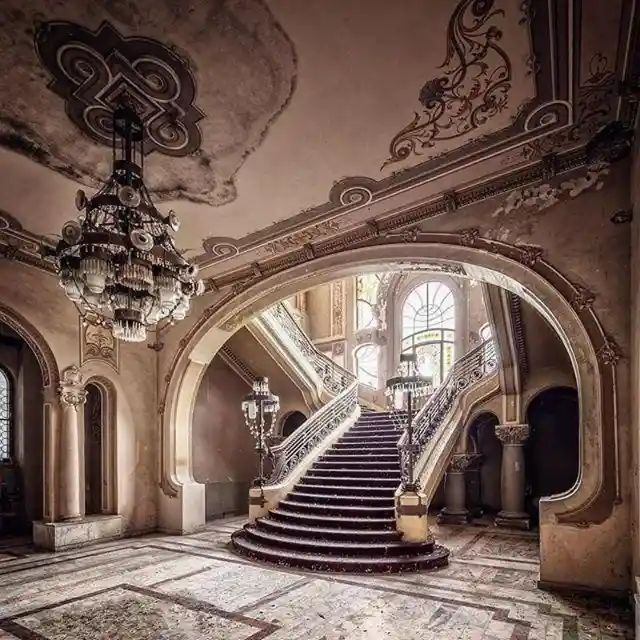
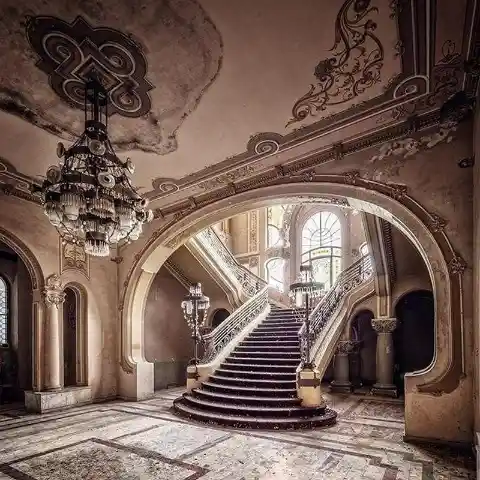
Romania, a place where the whispers of the past still linger in the air, is a gem tucked away in Eastern Europe. A country that once danced to the rhythm of royalty and gentry now wears the bittersweet cloak of time. The grand mansions and castles, echoes of its illustrious past, stand forlorn, with many lost to decay, craving the care they once knew.
The grandeur began to crumble with the turmoil of World War II, marking a turning point for these architectural marvels. Palaces once filled with laughter and waltzes turned into halls of healing as makeshift hospitals, a testament to necessity's harsh call. Yet, when peace returned, so did silence, with repair costs soaring too high, leaving aspirations of restoration as mere daydreams.
The '80s breathed a last gasp of effort into these historical treasures, but it wasn't enough. Now, doors remain closed, barring would-be adventurers, guarding against the risk that comes with beauty in ruins. The stunning landscapes of Romania are still there, but many of its jewels remain hidden, asleep, with stories untold.
Sammezzano: Italy's Enchanted Castle in Repose
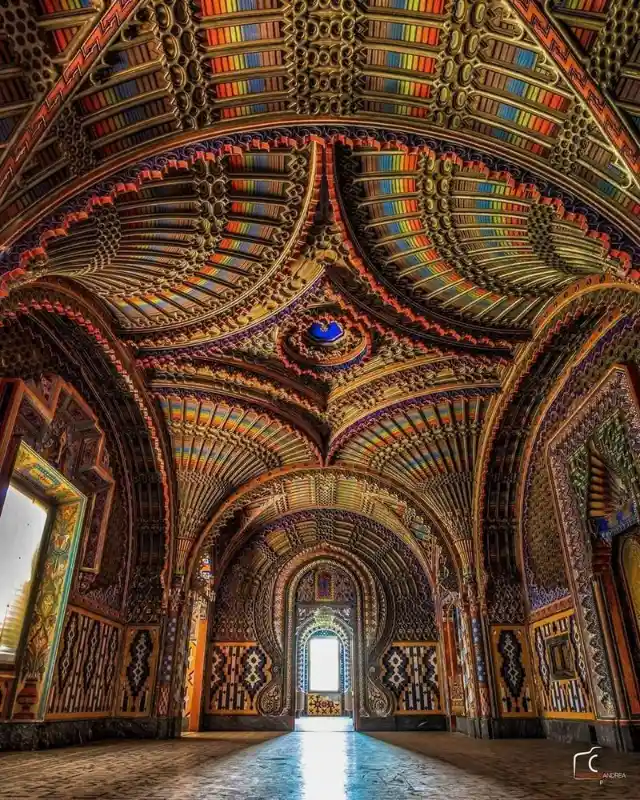

Nestled in the wooded embrace of Reggello, Italy, there's a castle that whispers tales of grandeur amidst the silence of abandonment. It's not just any castle; this one was born atop a royal palazzo and has seen itself reinvented time and again from 1605 to 1853, shaped by the whims of discerning owners.
The vision of the Marquis Ferdinando Ximenes Panchiatichi brought this castle to life over forty years. He dreamt of a place that would whisk his guests from the familiar Italian countryside to a realm of fantasy. The walls of this architectural wonder echo his desire for the extraordinary, proudly bearing the phrase "Nonplus ultra," a bold claim that there's nothing beyond its splendor.
The rooms are a labyrinth of wonder, each a world unto itself, from peacock sanctuaries to stalactite grottos and chambers celebrating lovers. But the echo of opulence faded after the marquis' last breath. Sammezzano's grand halls then donned a new mask, that of a luxury hotel, drawing the glitterati of post-war Europe. Yet, the glitter faded, and by the 1990s, the castle retreated into silence, its doors shut.
Now, as of 2020, it slumbers in the forest, its stories locked within, awaiting the touch of restoration to awaken its walls once more.
Capranica: A Medieval Jewel on the High Ground


Imagine a town where every stone tells a story of ancient hands and old-world craftsmanship. That's Capranica for you, a place perched high on the Cimini mountains, its gaze stretching over the historic Via Cassia. This isn't just another dot on the map; it's a sanctuary carved out of necessity and resilience by the people of Vicus Matrini. Driven from their first home and forced to watch its destruction, they sought the freedom that only the high ground could offer.
Capranica is cradled by rugged cliffs, with only two paths that wind their way into its heart. Nowadays, it's a picturesque escape from the rush of the 21st century, a slice of serenity where the past and present mingle. But don't let its charm fool you; those narrow entries were a strategic choice, a declaration by its founders that never again would they be taken from their homes unwillingly. Here, in this bastion of history, they built more than just a town; they built a legacy of liberty and security.
In the Land of Whimsy: The Clay Castle of Fairytales


Nestled in the foothills of the Carpathian Mountains, in the mystical heartland of Transylvania, there lies a castle that seems to spring straight from the pages of a fairytale. They call it Castelul de Lut Valea Zanelor, the "Clay Castle of the Valley of the Fairies," and one can't help but agree that the name is a perfect fit. This enchanting place was crafted to mirror a village of gnomes as if it sprang up from the earth itself.
Built with the gentle touch of eco-friendliness, every window and door is a testament to individuality, no two are the same. The towers and undulating walls seem to hum with enchantment, the exact sort you'd find in a story where magic lingers and every nook tells a tale. It's easy to imagine a witch lurking just beyond the village bounds, as the castle's inhabitants carry about their storybook lives.
The Cosmic Canvases of the Equine World


At first glance, you might think this horse stepped out of an interstellar portal, with a coat that looks like a starry night sky. The Sorrel Leopard Appaloosa, however, is very much of this earth and is the proud creation of the Nez Perce people. Back in '94, they embarked on a visionary project, blending the spotted splendor of the Appaloosa with the sleek grace of the Akhal-Teke from Central Asia. The result? Horses that carry the wildness of leopards in their skin.
The venture wasn't just a flight of fancy but a well-supported endeavor. The Nez Perce tribe, the United States Department of Health and Human Services, and The First Nations Development Institute all pitched in. The horses born from this collaboration are canvases alive with unique patterns, each one a living, breathing piece of art.
These horses are more than just their spots; they're the embodiment of endurance. Long, lean, and born to run, they're the marathon runners of the equine world, with a dash of cosmic mystery in their stride.
Houses in Groningen, Netherlands


Groningen, with its tranquil canals and bustling streets, carries a past that belies its peaceful present. This place, a canvas of beauty, was painted with the strokes of strife, its foundations laid amidst the clang of swords and the clamor of conflict. The 1500s were a time of turmoil, where the town of Groningen stood defiant against the mighty king of Spain, while the surrounding Ommelanden districts were locked in a relentless tug-of-war with Spanish rule.
As the century waned, so did the appetite for discord. In 1594, swords were sheathed, and Groningen and Ommelanden reached an uneasy peace. Yet, it took another two centuries and a nudge from the French occupation before they wove their fates together into one province in 1795. If history has taught us anything, it's that even from the throes of chaos, a place as stunning as Groningen can emerge, standing as a testament to the harmony that can follow upheaval.
The Last Curtain Call of a Legendary Duo
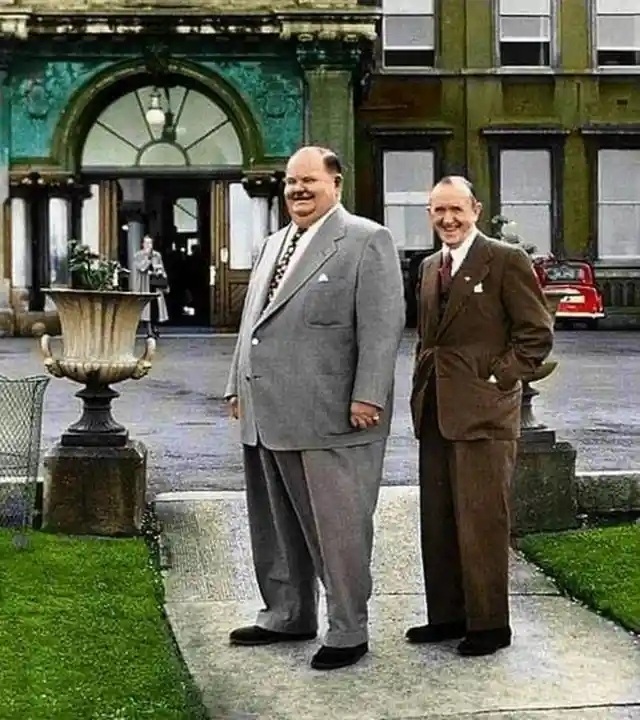
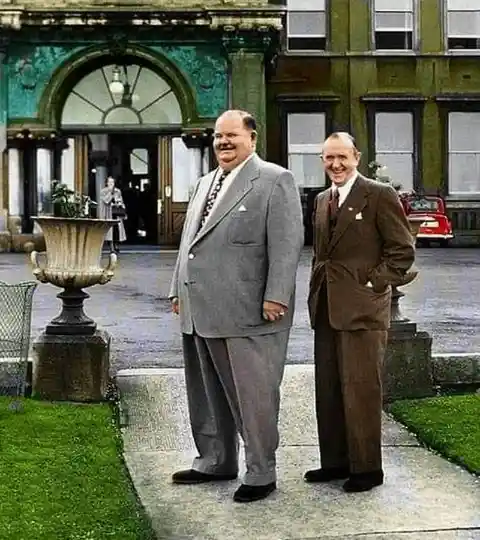
Once upon a time, in 1953, the legendary comedy pair Laurel and Hardy were embarking on their final bow across the stage. Their alliance had sparked into being in 1927, and their chemistry was nothing short of magical, enchanting audiences far and wide. But as the golden age of the '50s dawned, they found themselves no longer at the zenith of comedy they once commanded.
Their swan song took them to the shores of England with a skit called "Birds Of A Feather." It was a performance that saw theaters sometimes brimming with laughter, yet other times, the echoes of empty seats whispered back at them. After a month-long stint at the Nottingham Empire, Laurel penned his concerns back home, musing that perhaps England's grim economic skies were casting shadows over their once sparkling presence on stage. He wrote:
“ They are all blaming the invasion of TV, which I don't think has anything to do with it. There is a terrific amount of unemployed plus a lot of labor trouble - strikes, etc. It's just a case of bad conditions in the country. The TV programs I've seen would certainly drive people INTO a theater - even to see a bad show! They are awful!”
In the Shadow of Giants: Angelica Huston's Rise
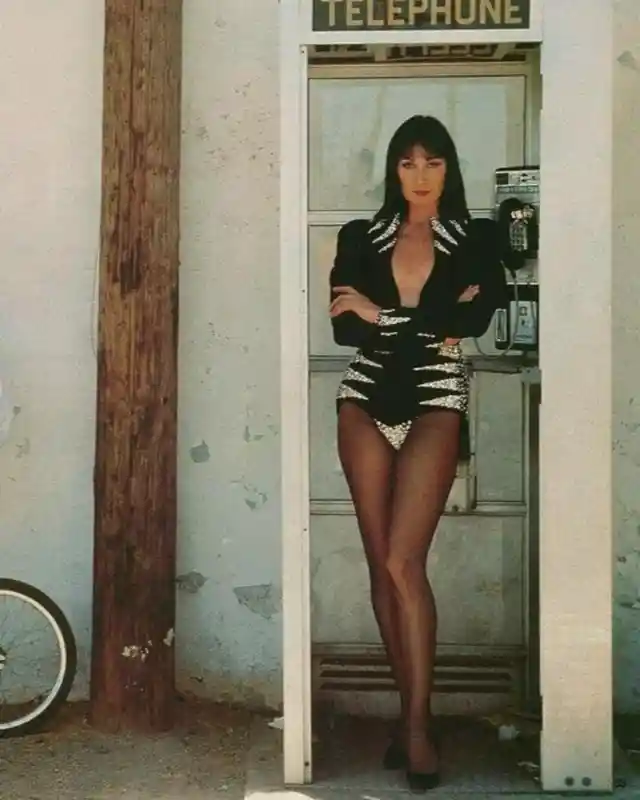

Angelica Huston's childhood was cast in the long shadow of her father, the formidable John Huston, whose directorial genius gave us classics like "The Treasure of the Sierra Madre" and "The Maltese Falcon." As a young girl, her world was a carousel of global backdrops, with her brother Tony often being her sole companion amidst their father's towering presence.
Today, Angelica shines as a star in her own right, but her early days in acting were far from glamorous. The critics were unkind, their words stinging. She confessed that reading those harsh reviews made her feel "awful," a pain that was a mere whisper compared to the loss of her mother at the tender age of 39. It was a tempest of emotion, but it was through these trials that she sculpted her indelible mark in the world of film. She told Entertainment Weekly:
“ It was devastating. I was very fragile and extremely unbalanced by the time that whole outing was completed.”
The Pullman Car: A Dream on Rails
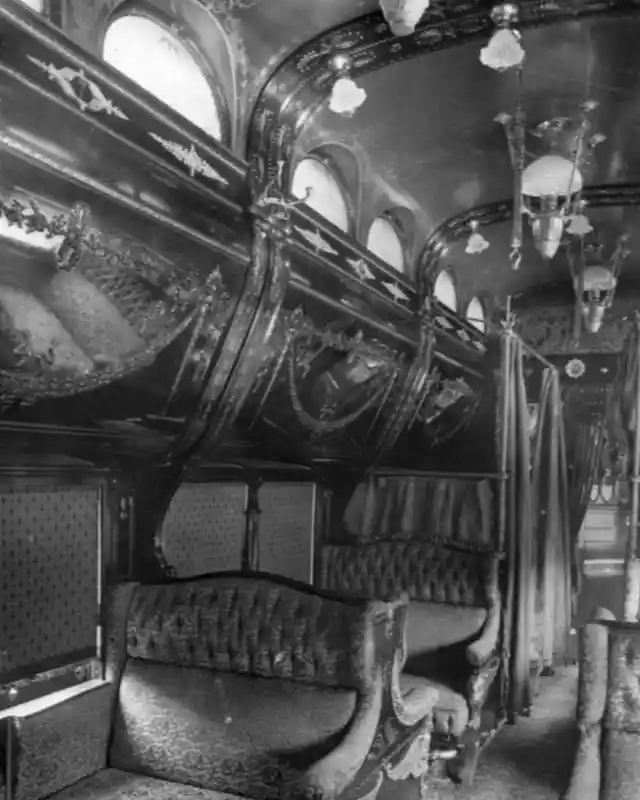
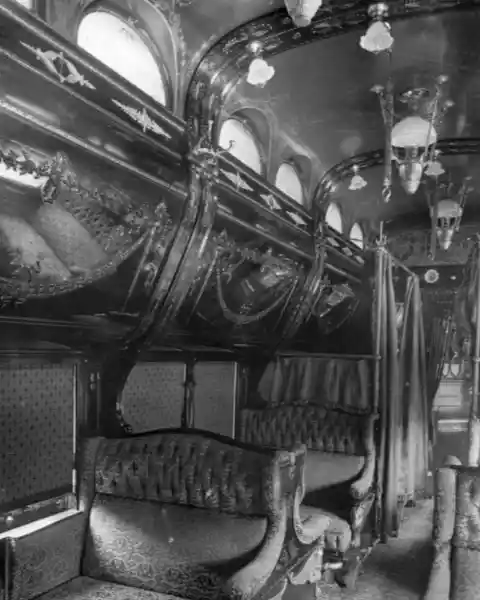
Once upon a time, the clatter of the tracks was a lullaby in the opulent sleeping cars conjured up by George Pullman. This engineer and industrialist didn't just imagine a line of luxurious trains; he built a whole town dedicated to crafting these rolling masterpieces. After work, his employees would stroll through the streets of this company town, the smell of dinner wafting through the air, the satisfaction of a day spent forging dreams into steel and velvet resting heavy in their hearts.
The seed for these sleeper trains was planted on a night when Pullman himself was tossed and turned by the crude berths of a regular train car. Why suffer, he thought, when you could sleep in the lap of luxury? His designs boasted an upper berth that tucked away neatly, much like an overhead luggage bin, unfurling at night into a cozy bunk.
Adorned in rococo splendor, the Pullman cars were a sight to behold, their grandeur slowly retiring over the 20th century. Yet, these iconic trains continued their journeys until the 1980s, their legacy lasting until they were enveloped by Bombardier's modernity.
Paris 1878 The Statue of Liberty's head at the World's Fair before it was given to the US
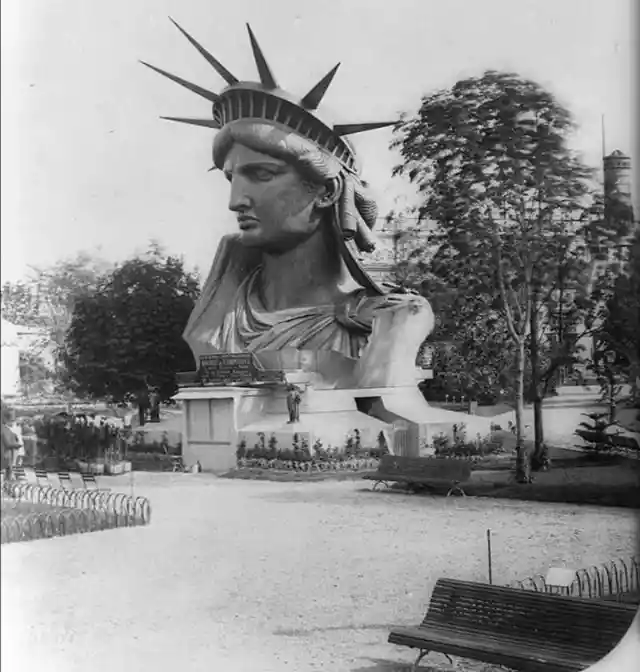
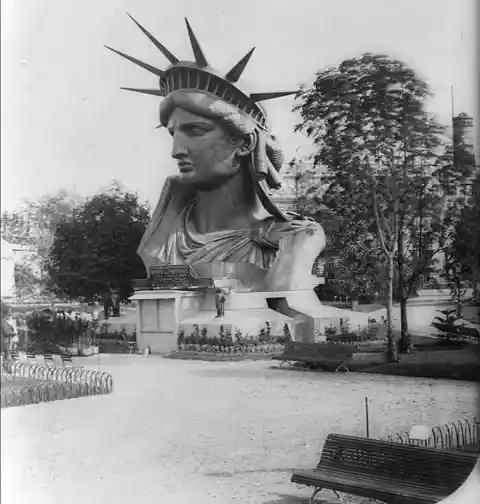
Driving through the bustling streets of New York City, you can't miss her – the Statue of Liberty, standing tall, a colossal symbol of freedom and a stunning 19th-century present from France. But imagine this: she didn't arrive here standing. No, she came in pieces, like a giant 3D puzzle waiting to be solved. It was practical, really – sending her over the ocean in one piece would've been a nightmare, both logistically and on the wallet.
Back in 1878, during the buzz of the Paris World's Fair, Lady Liberty's head was the talk of the town. Visitors could look straight into the eyes of freedom without craning their necks skyward. It wasn't until six years later, in 1884, that the full statue made its grand voyage to the States.
Thinking about it now, it would be quite a sight to see her in pieces once more. To stand shoulder-to-shoulder with that iconic, colossal head would be a surreal tribute to America's melting pot of cultures. A strange, yet profoundly beautiful, patchwork emblem of liberty.
Paris Hilton and Kim Kardashian at North Bondi Beach in Sydney, December 2006


Once upon a time, before the glitz and glamor of E! TV and before becoming a household name, Kim Kardashian played a supporting role in the saga of celeb life—as the assistant to her then-bff, Paris Hilton. Now, you might think running after a socialite could be a walk through a never-ending nightmare, but Kim begs to differ. She didn't mind the gig, claiming it was all pretty chill if you're the type who can handle a bit of cleaning and organizing. It was all in a day's work, and hey, everyone's got to start somewhere, right? She explained:
“ I would work with Paris, and I would love to organize and clean out their closets and get rid of all their stuff and sell it on eBay and then shop for them, shop for her. That was my job.”
Polaroid of Farrah Fawcett taken by Andy Warhol in 1979


Andy Warhol, the man who made Campbell's Soup cans an art icon, also had a knack for capturing the faces of the famous with his Polaroid camera. His shots were intimate, a window into the souls of stars, bathing them in a light that somehow made the glamorous even more so.
In the heyday of 1980, Warhol's camera found Farrah Fawcett, her stunning profile immortalized in a Polaroid that would give life to not one, but two paintings. When Fawcett's star faded in 2009, she bequeathed one of these painted echoes to her old stomping ground, the University of Texas. The other? It became the treasure of Ryan O'Neal, her on-off love of thirty years.
The plot thickened after Fawcett's goodbye. The University of Texas stood by the belief that both portraits were meant for its halls. Yet, it was O'Neal who, in 2013, found both artworks in his care. Facing a jury, he confessed that having the painting close was his way of keeping Fawcett's memory alive, saying, "I needed to have the painting in my home because I missed my former flame." He said:
“ I talk to [the painting]. I talk to her. It’s her presence in my life and her son’s life. We lost her. It would seem a crime to lose it.”
However, in 2018 he decided to sell the painting rather than leave it to any of his children. The painting is worth around $24 million, but O'Neal said that he was willing to let it go for less.
Sally Mann, Candy Cigarette (1989)


Sally Mann, with her camera as her paintbrush and her family as her canvas, has stirred both awe and controversy. Despite the critics, it's clear she finds her deepest inspiration within the walls of her home. Her "Immediate Family" series is a testament to this, where Mann's own children become the subjects of her enchanting photographic tales.
One image stands out— "Candy Cigarette". This isn't just a photograph; it's a narrative captured in a moment. Here, Jessie, Mann's daughter, is the star. With a candy cigarette casually resting between her fingers, she portrays the wistful bridge between childhood innocence and the allure of adult mannerisms. It's as if she's racing against time, a visual echo of the tug-of-war between growing up and holding on to the fleeting whispers of youth. Each time you return to Jessie's gaze, the photo whispers new secrets, making you pause and wonder at the complex simplicity of a child's pose, a mother's perspective, a family's story told without words.
Echoes of Elegance: Portugal's Majestic Ruins
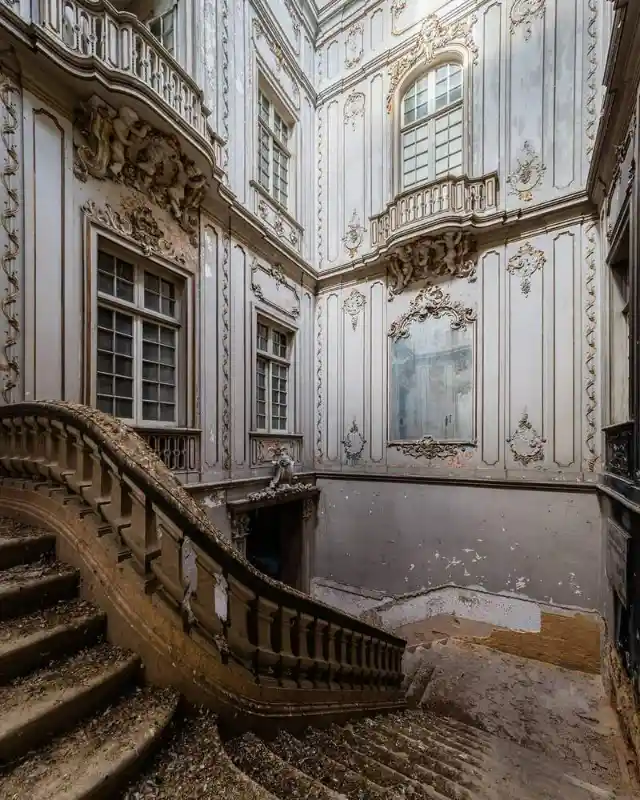
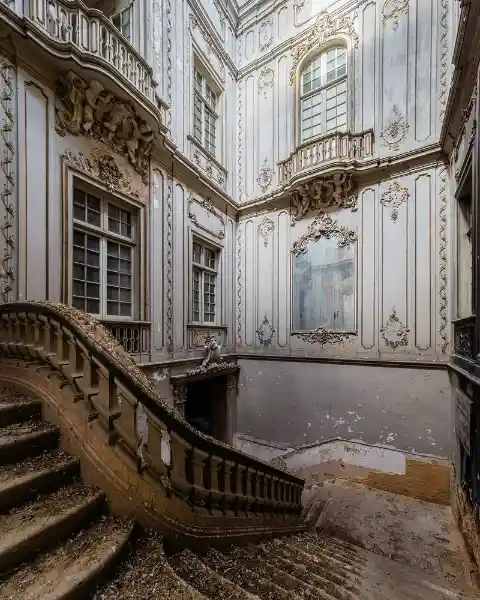
There's an unexpected grace in the quiet decay of abandoned places, a certain allure in the sight of grand mansions and palaces surrendering to time's relentless march. Witnessing the craftsmanship of yesteryears crumble might tug at the heartstrings, yet there's a peculiar charm in watching history unravel its threads right before your eyes, in the most hauntingly beautiful way.
Portugal, with its tapestry of forsaken spaces, holds a treasure trove of these poignant scenes. Each corner of its forgotten structures is a brush stroke of the past, now being gently reclaimed by the persistent hands of nature.
There's something deeply moving about standing amidst the ruins of what was once a bastion of wealth in Lisbon, watching it gracefully bow to the encroaching embrace of Mother Nature. It's a reminder of the impermanence of grandeur and the eternal dance between man-made wonders and the wild artistry of the natural world.
Villa Zanelli: From Art Nouveau Gem to Echoing Silence
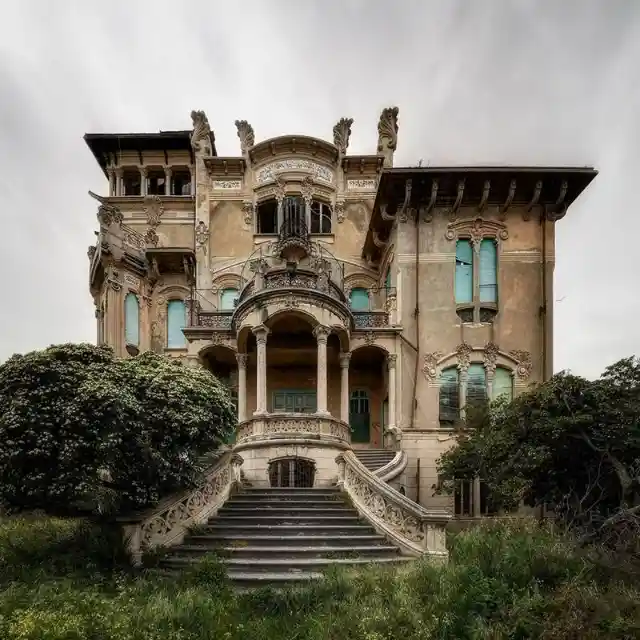
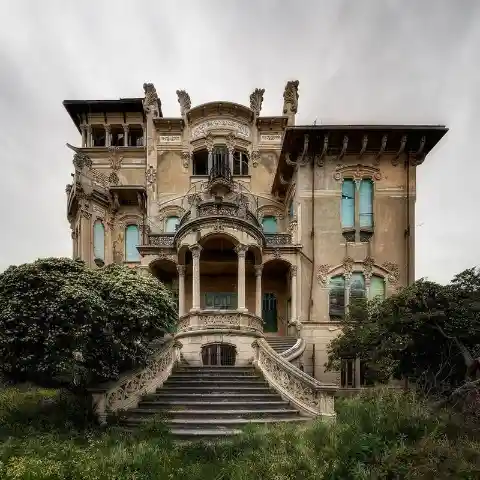
Tucked away and shrouded in enigma stands Villa Zanelli, a once-glorious domicile that whispers tales of the past. Crafted, it's believed, by the hand of architect Gottardo Gussoni, it was a home that once buzzed with the splendor of "new art," a movement that swept through the heart of Europe in the waning years of the 19th century.
The turn of time saw the villa change hands in 1933 when the Municipality of Milan saw fit to reinvent it first as an international camp, and then, as the storm clouds of World War II gathered, into a hospital—a common destiny for many such stately homes of the era.
Now, Villa Zanelli stands silent, its grandeur paused, holding its breath for the day it will be awakened by new keepers, ready to infuse life into its yearning walls once again.
Victorian Splendor Awakens: The St. Pancras Renaissance Story


In the heart of London, the grand St. Pancras Renaissance Hotel emerged, not all at once, but in a dance of creativity between 1873 and 1876. Crafted during an era of steam and ambition, its Victorian elegance was more than mere architecture—it was a calculated charm by the Midland Railway Company to allure and dazzle.
Take a moment to ascend the hotel's staircase, a marvel of intricacy where the eight Virtues stretch and yawn, awakening from slumber to a sky painted in hues of blue and green. It's a sight that steals the breath and dances with the imagination. And the presence of an eighth virtue amidst the seven? It's not an attempt at being psychedelic but a matter of Victorian mathematics, a testament to the era's love for detail and grandeur. Historian John Mercer explained:
“ Functionally, seven virtues cannot be spread across the ceiling. Four virtues on one side and four on the other side. They invented one virtue called, 'industry.”
Tragedy Behind the Laughter: The SNL Class of '92


The 1992 ensemble of Saturday Night Live had its share of shadows amidst the spotlight. It was a year glittering with talent—names like Adam Sandler and Chris Rock who'd beam brightly in the Hall of Fame. Yet, not all tales from that cast have happy endings. Chris Farley and Phil Hartman left us too soon, and Dana Carvey narrowly escaped death's clutches due to a heart surgery gone awry years later.
Chris Farley's light dimmed in a haze of addiction, his life a turbulent storm of excess and fleeting sobriety. His final days in 1997 spiraled into a four-day descent, ending with a scene no brother should witness—Farley, lifeless on his couch on December 18.
The following year, the night of May 27 painted a grim picture. Phil Hartman, a beacon of comedy, met a tragic end, shot by his wife in a drug-fueled haze. The horror didn't stop there; the silence of their home was shattered again when she turned the gun on herself.
The stage of SNL once shimmered with the brilliance of Hartman and Farley, but the darkness that enveloped their fates left an indelible mark on the legacy of that year's cast.
The Empire State Building before it was surrounded by skyscrapers, 1946
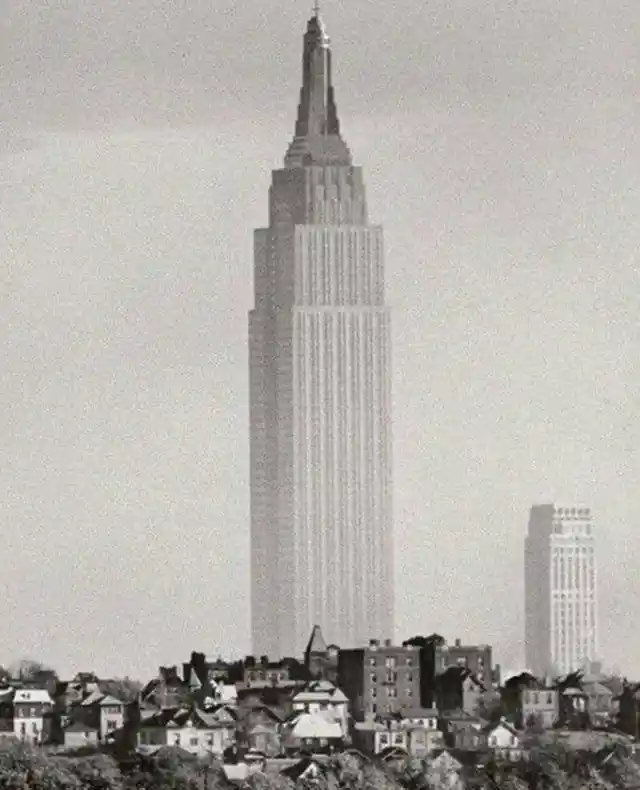
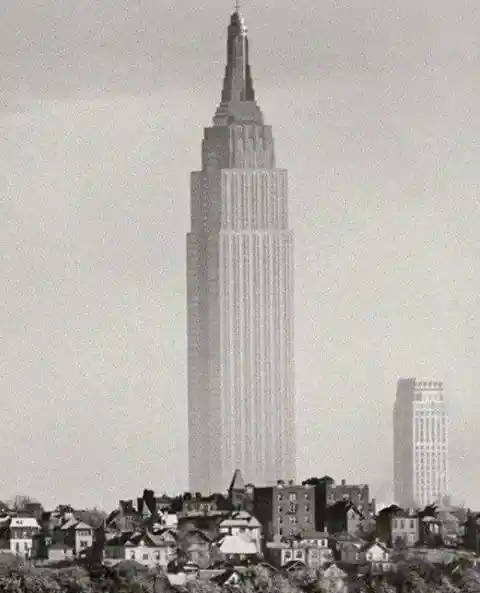
Once upon a time, New York City was but a modest settlement, its feet firmly on the ground and the Empire State Building a solitary giant in the skyline. It's a bit of a mind-bender, picturing the city without its forest of skyscrapers, especially since for much of its four-century story, the city was relatively horizontal.
As the 1900s dawned, the architects of New York lifted their gazes skywards, fueled by dreams and the burning ambition to declare to the world that their city was second to none. The Empire State Building was the torchbearer, a beacon that spurred the city into a vertical race toward the clouds. And before long, the rest of New York followed suit, reaching higher and higher, as if trying to catch the stars themselves.
Stepping into a Surreal Wonderland: The Enchanting Chongqing Zhongshuge Bookstore


If you're a book lover like me, there's nowhere better than a bookstore. The moment you enter, you're greeted by stories that dance all around, beckoning you to explore. But imagine if that bookstore could transcend reality, transforming into a mesmerizing M.C. Escher-esque bookshelf that becomes the very architecture of the store. Welcome to the Chongqing Zhongshuge Bookstore, a pure delight for readers and architecture enthusiasts alike.
Located on the third and fourth floors of Zodi Plaza, Yangjiaping in Chongqing City, China, this bookstore is not your ordinary book haven. It's a haven that has been crafted with a touch of magic. As you step inside, you are immediately transported into a world where imagination meets reality. Your eyes can't help but widen as you take in the astonishing lampshade-shaped bookshelves that seem to twist in and out of the store's lobby, creating a mesmerizing dance of words and architecture.
But the enchantment doesn't stop there. As you browse through the store, you'll discover bookshelves that seamlessly blend into the very walls they inhabit. It's as if the books themselves are an integral part of the building, intricately woven into its structure, creating an otherworldly experience that is simply awe-inspiring. It's like stepping into a surreal wonderland where books and architecture converge in perfect harmony.
By combining creativity, craftsmanship, and a deep appreciation for the art of storytelling, they were able to transform the Chongqing Zhongshuge Bookstore into a haven that defies reality, immersing visitors in a world where books come alive.
“ We utilized the mirrored ceiling to make the space seem bigger. It is a fantastic real-life experience that pictures simply cannot offer. It has attracted a huge amount of visitors to the bookshop, nearly 200,000 people have visited the bookshop within the first 15 days of opening. Such big crowds even forced the operator to limit the number of visitors in a day.”
Beware the Mighty Chimps: Unveiling the Incredible Strength of our Forest-Dwelling Cousins


In the vast animal kingdom, some creatures terrify us with their sheer power. Lions, tigers, and bears may be fearsome, but have you ever heard of shredded chimpanzees? These tough fellas reside in the trees and give us humans a run for our money, quite literally.
Prepare to be astounded as we delve into the awe-inspiring world of chimpanzees and their mind-boggling strength. Researchers have taken a deep dive into the jungle to uncover the truth, and what they've found is truly astonishing. Chimpanzees, it turns out, are approximately 1.5 times stronger than us, especially when it comes to pulling and jumping tasks.
Now, before you start picturing chimpanzees hitting the gym while humans slack off, let's get to the meat of the matter. It all comes down to how the fibers in their muscles are distributed. It's not just about having more muscle mass; chimpanzees have a strategic advantage when it comes to their muscles, thanks to their tree-dwelling lifestyle.
You see, chimps are born and bred to live among the treetops, honing their physical prowess every single day. The constant climbing, swinging, and leaping have sculpted them into lean, mean, muscle machines. Their muscles are finely tuned for gripping branches, propelling them through the air, and reigning supreme in the forest. It's no wonder they have an edge over us, mere humans, when it comes to sheer strength.
This Roman theater in Aspendos, Turkey is considered the best-preserved ancient theater in the world


Imagine being able to travel back in time, to a place where ancient civilizations thrived, and history whispered its tales. Welcome to Aspendos Theater in Serik, Turkey, where the echoes of the past come alive in striking detail. This extraordinary theater, dating back to 160 B.C. during the reign of Roman Emperor Marcus Aurelius, gives us an incredible window into life during that era.
As I stand in awe within the walls of this ancient masterpiece, I can't help but marvel at its remarkable preservation. Aspendos Zenon, a Greek architect born in Aspendos, left behind his imprint, ensuring that his genius would be remembered for centuries to come.
Designed to accommodate a staggering 7,300 to 7,600 people, its scale is both awe-inspiring and humbling. As I walk through this monumental structure, I'm struck by its remarkable acoustics, which allow even the faintest whispers to be heard across the vast expanse. It's as if the very stones carry the voices of the performers and spectators from centuries ago.
As I delve deeper into its history, I'm reminded of British archaeologist David George Hogarth, who in 1909 studied the theater with awe. His observations and studies, like many others, contribute to our understanding of this ancient wonder.
“ This is not like anything that I ever saw before. You may have seen the amphitheaters in Italy, France, Dalmatia, and Africa; temples in Egypt and Greece; the palaces in Crete; you may be sated with antiquity or scornful of it. But you have not seen the theatre of Aspendos.”
The Young Soldier: Winston Churchill's Thrilling Journey on the Path to Leadership
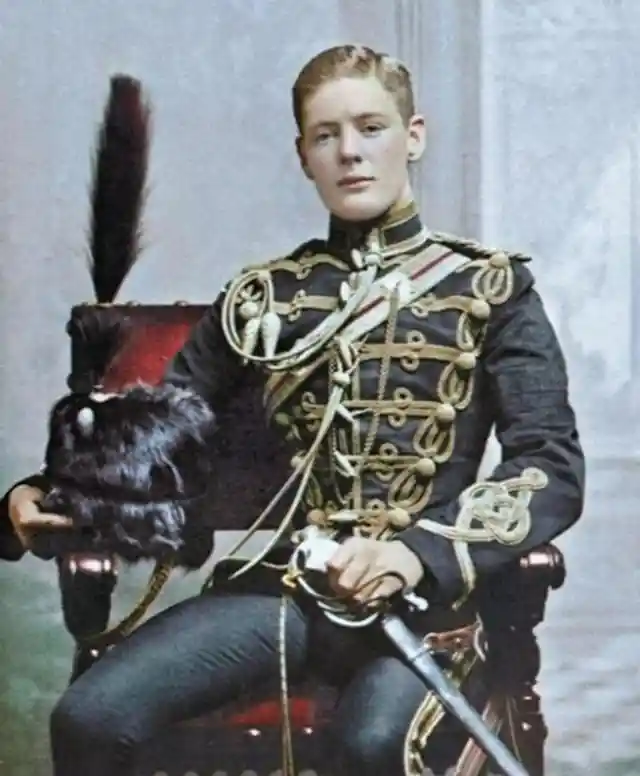
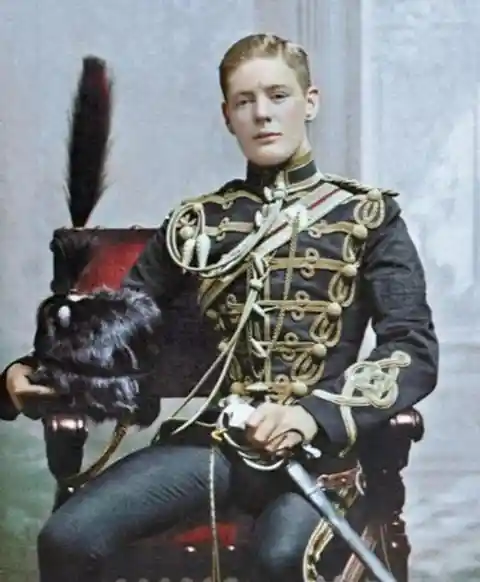
Step back in time with me to 1895, when a spirited 20-year-old Winston Churchill embarked on a life-changing adventure. Fresh out of the prestigious royal military academy of Sandhurst, he eagerly immersed himself in the world of a soldier, ready to face the challenges head-on. There was something about the military that tugged at his soul—the structure, the discipline, the tight-knit brotherhood—it all called out to him.
As I delve into the tales of his youth, Churchill fondly reminisced about his early days in the military. It was a time of forging deep connections with comrades who became like family. However, he couldn't help but acknowledge the harsh realities of war. Many of those cherished friends, whom he laughed and fought alongside, eventually succumbed to the perils of battle.
Despite the heartache, Churchill's love for the soldier's life remained unwavering. With boots on the ground, he reveled in the thrill of it all. In his own words, Churchill penned his vivid experiences, capturing the essence of his time as a young soldier:
“ In contrast with my school days, I had made many friends, three or four of whom still survive. As for the rest, they are gone. The South African War accounted for a large proportion not only of my friends but my company; and the Great War killed almost all the others.”
The Unseen Courage: A Snapshot of Unity in Segregated Omaha, Nebraska
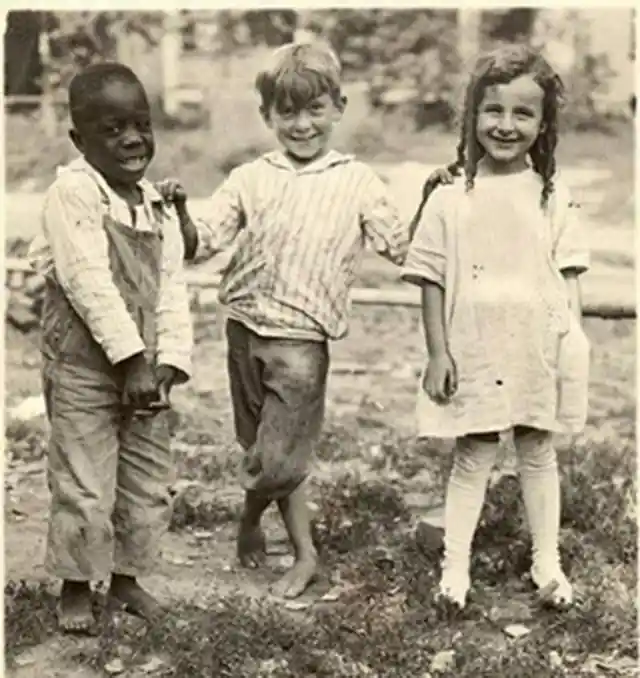
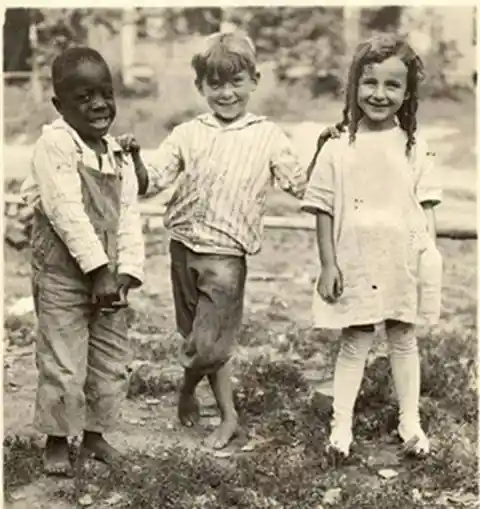
Come with me on a journey to early 20th century Nebraska, where the black population faced confinement and discrimination, much like other parts of the country. In Omaha, there was a designated area known as "Portertown," where many African Americans were forced to live due to limited options. But amidst the harsh reality of segregation, there is a captivating photograph that demands our attention and tells a story of resilience.
As I examine this remarkable shot, I can't help but marvel at the scene it captures. In a time when the shops and restaurants of Omaha barred African Americans from entry, these children - unaware of the revolutionary act they were carrying out - defied the rules simply by playing together. In their innocent laughter and shared joy, they unknowingly challenged a discriminatory world.
The significance of this moment becomes even more profound when we consider that it would take another 50 years or so for such open integration to be allowed in some parts of America. These children, caught in this powerful image, embody the unseen courage that dwells within them, transcending the barriers imposed upon them by society.